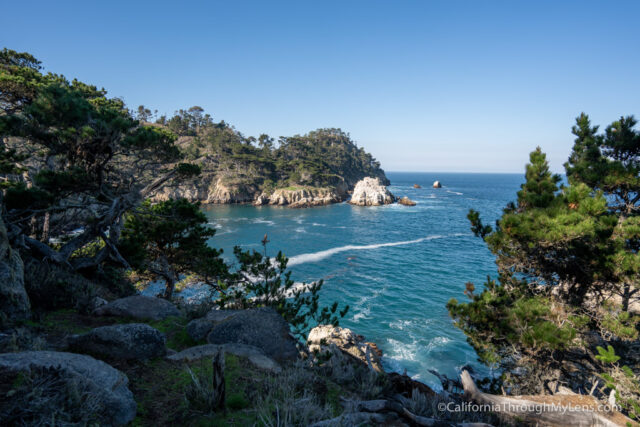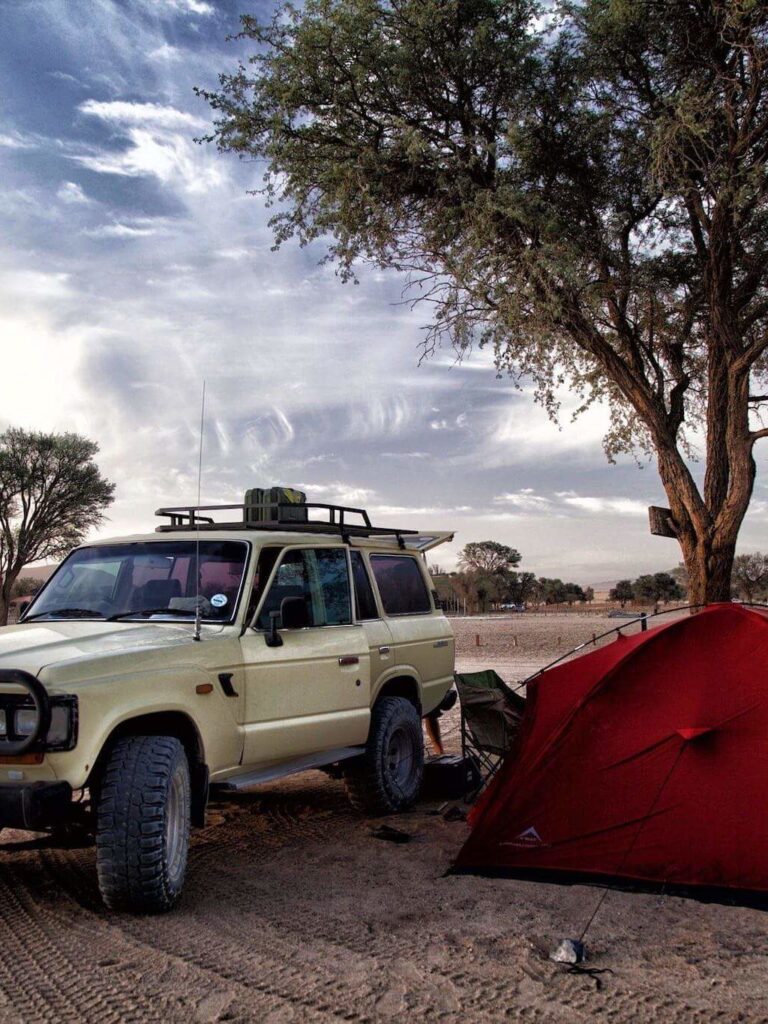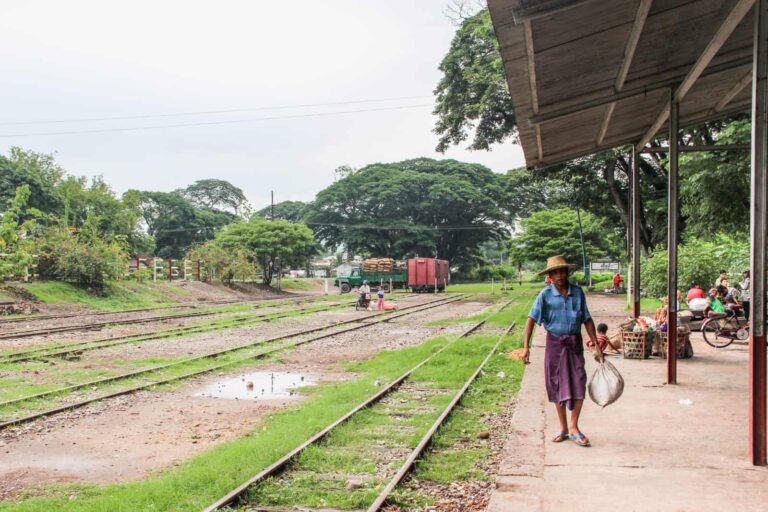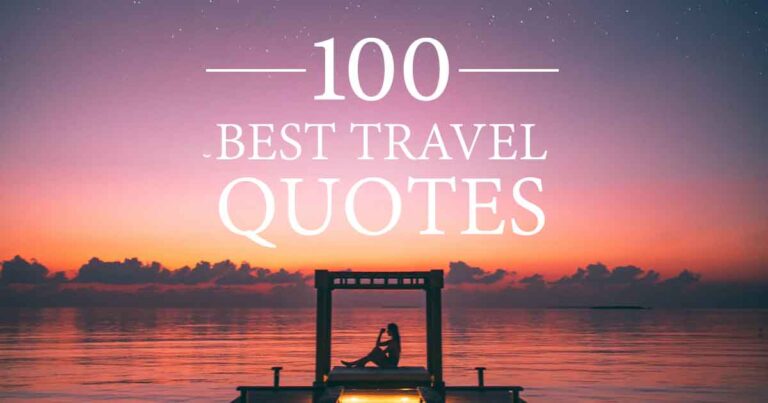A focal point and centrepiece for Tibetan Buddhists and pilgrims who come here from through Tibet and further afield, Lhasa is more than just the new capital of the Tibetan Autonomous Region.
While China heavily manages Tibet tourism, visiting means helping to keep Tibetan culture alive and experiencing those pockets of Tibetan Buddhism so deeply entrenched in the form of spiritualism you won’t witness anywhere else. Your visit is then about using your freedom to return home to tell the world all about it.
Tibet street scenes, where buildings display Chinese flags
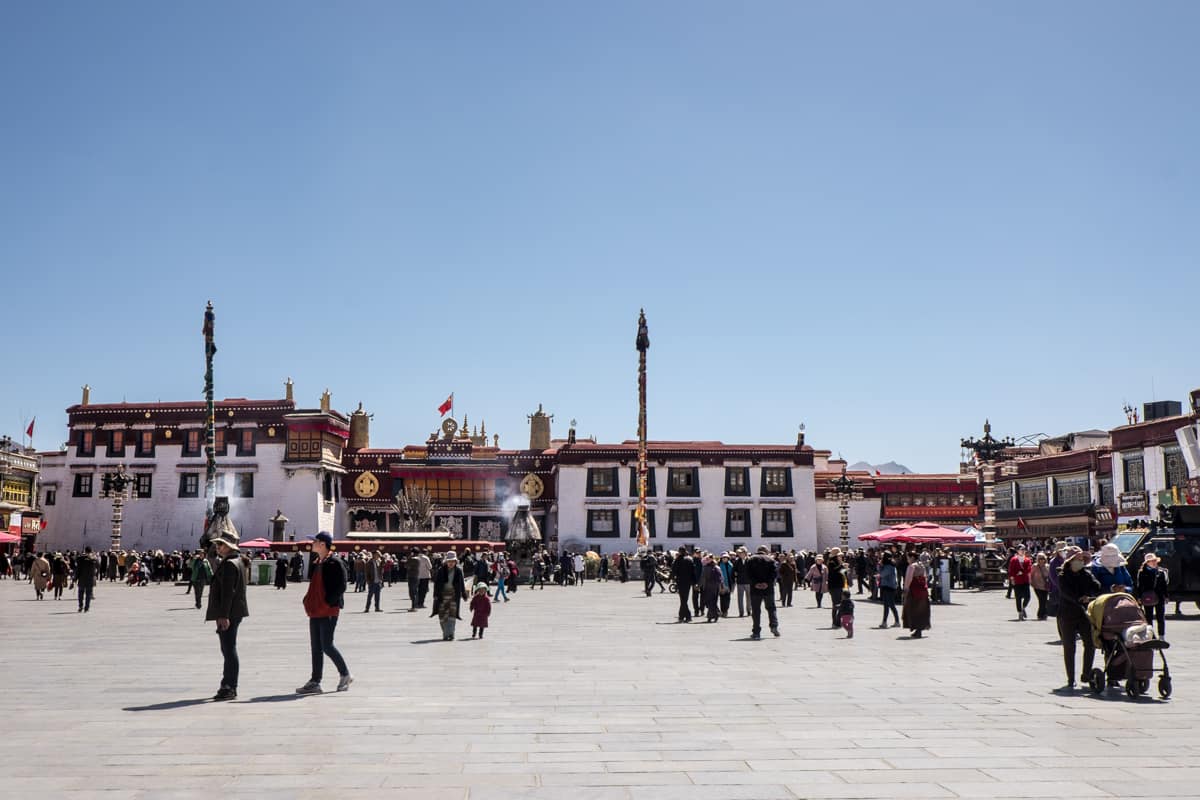
Due to strict control by the Chinese government, your trip is organised and scheduled, especially since the driver, guide and the group need to be at police checkpoints along the journey by a specific time. However, with approximately ten days on the ground, you get to cover a lot of Tibet and see the country’s major highlights and differences across cities and landscapes. You also have plenty of free time for extra exploration in each city.
Tibet Today
Say hydrated. Drink plenty of water and get plenty of sleep. Dehydration and fatigue are not what you need on this trip when some days involve a lot of sightseeing and long walks around sites. You can pick up dehydration sachets in Kathmandu, which you’ll find in all supermarkets stocked up for those about to go trekking. Or take electrolyte drinks tablets or salts with you.
If exploring alone in free time, you simply show your passport and state where you are staying and your Nationality (the standard questions). We never encountered any issues going through, and we visited more than once to enjoy the incredible atmosphere of the Kora.
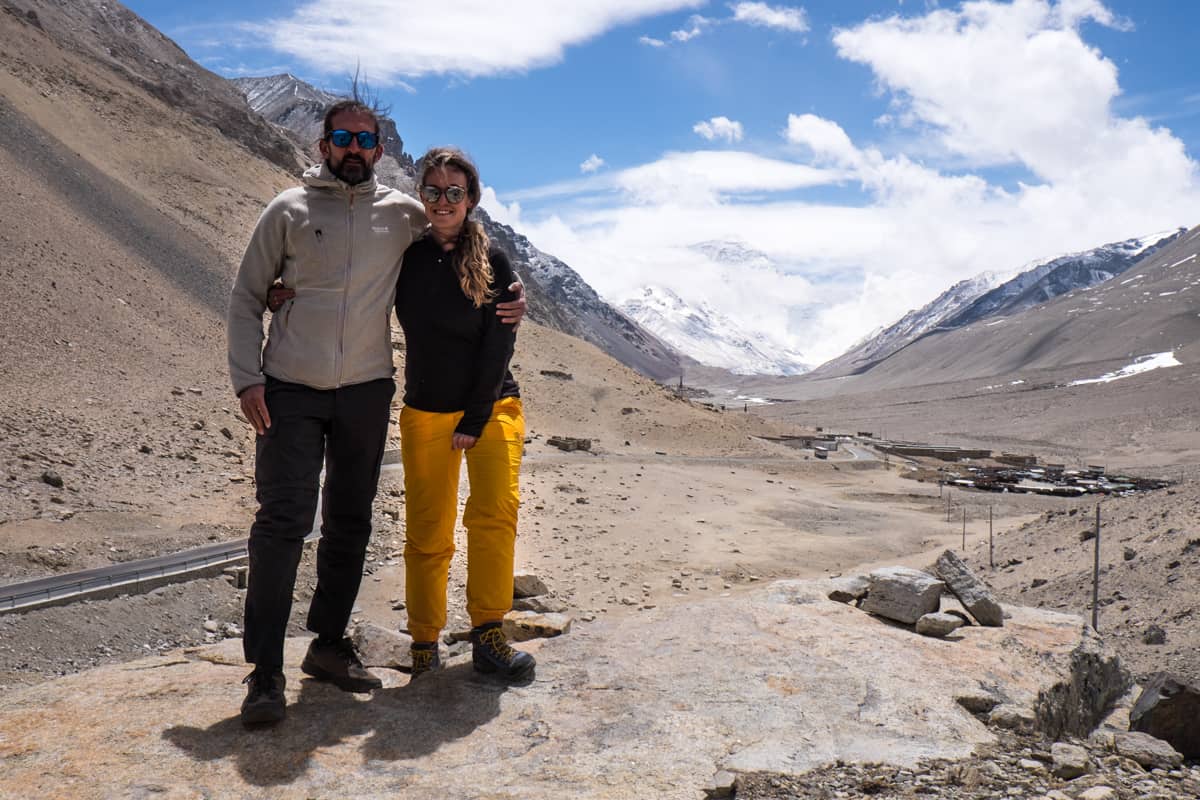
Disclaimer: This post contains affiliate links to handpicked partners, including tours, gear and booking sites. If you click through or buy something via one of them, I may receive a small commission. This is at no extra cost to you and allows this site to keep running.
Images for Tibet Visa
The organisation of tourism in Tibet also means that your itinerary is pre-approved and cannot be altered, This means that speed restrictions and police checkpoints along the journey (in accordance to your trip schedule) are a requirement. However, the simple reality is that often your Tibetan guide shows the relevant documents and all passports, which makes the process quicker and easier.
A Tibetan owned shop in Lhasa
In a destination where Chinese control affects all aspects and layers of daily life, where your tourism money goes, and what and whom it supports, is especially important.
The bustling, busy streets of Lhasa
Is it Ethical to Travel Tibet?
Why You Should Travel to Tibet
Elevation 3658m
Do not carry any images of the Dalai Lama while in Tibet. Possession of Dalai Lama pictures is illegal here, with severe consequences for Tibetans.
Outside a Tibetan teahouse in Gyantse

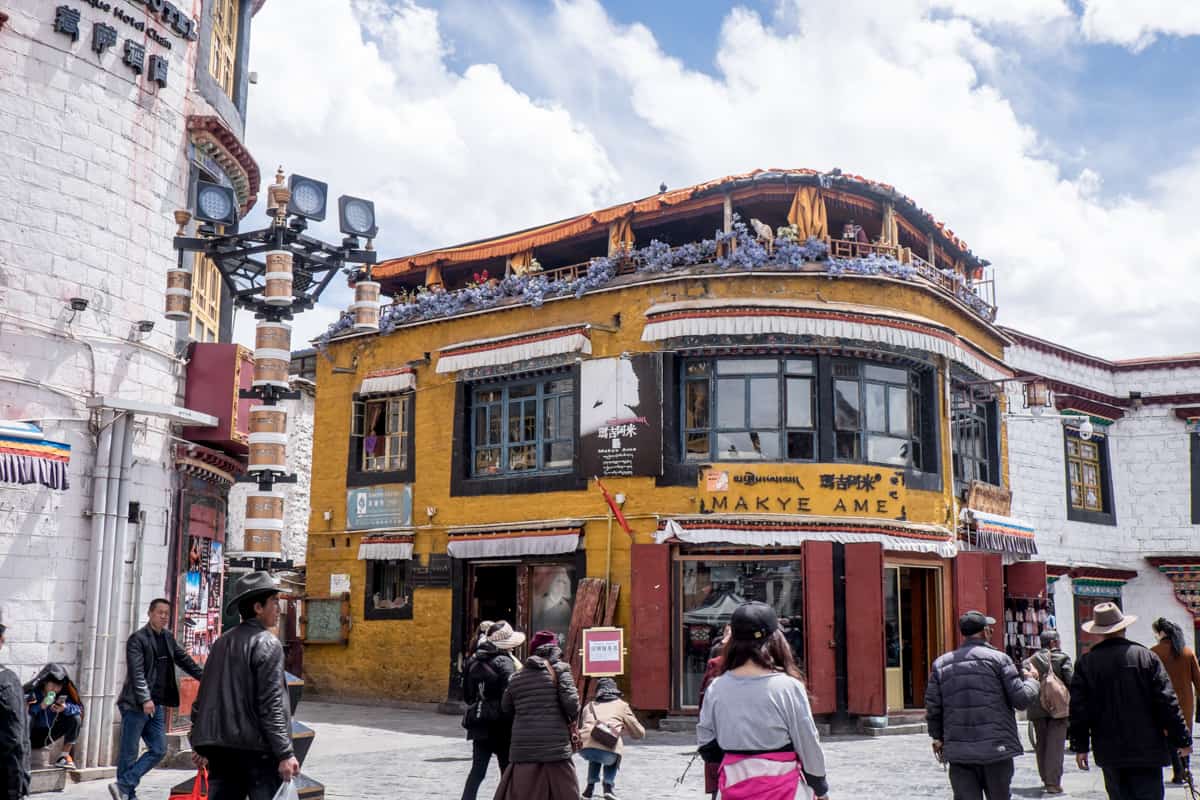
The Reality of Tibet Travel
Tibet is best experienced via an overland tour, and one covering a lot of ground. On the two-week High Road to Tibet trip with G Adventures, I flew from Kathmandu to Lhasa, spent four days on the ground in the Tibetan capital, before moving on to Gyantse, Shigatse, Rombuk and Everest Base Camp Tibet for the final highlight. An overnight stay in the border town of Kyirong was the last stop before the long and scenic drive back to Kathmandu.
Potala Palace is the icon of the Tibet – the looming, 1000 roomed structure that sits on the hillside presiding over the capital is now a UNESCO World Heritage Site and museum. It’s a symbol of power, the old administrative centre and the seat of government of spiritual Tibet, built during the reign of the 5th Dalai Lama in 1645.
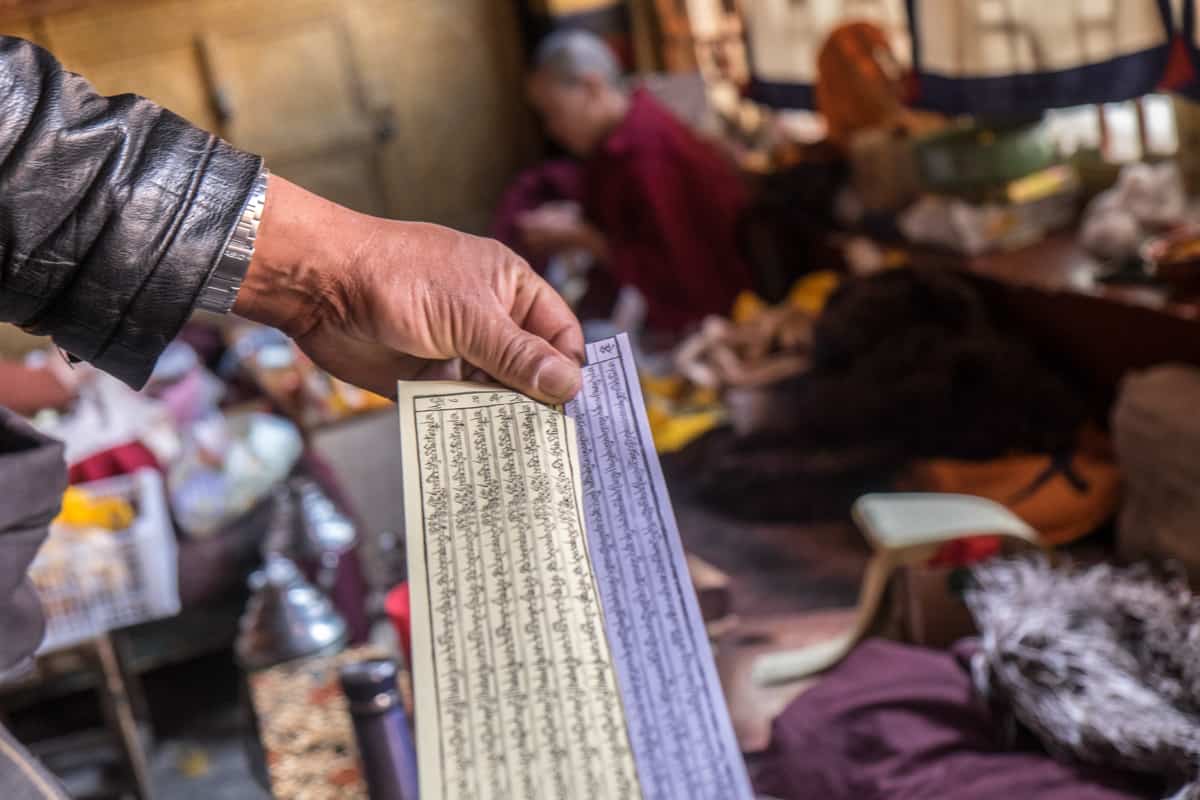
Safety in Tibet is a common question and a precursor to the decision to travel here. While you may hear about acts of political demonstration in the media, this is not something you are ever likely to see since the country is closed during critical political dates and anniversaries.

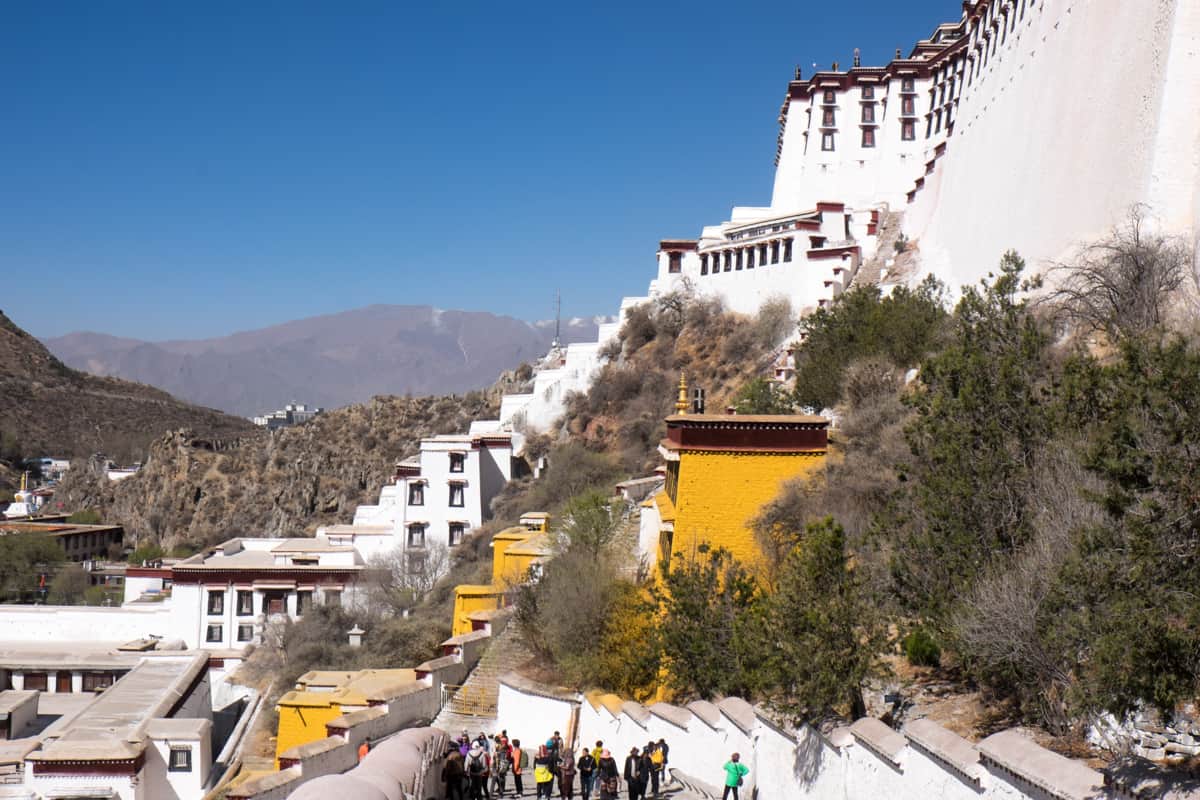
On the other hand, your visa money doesn’t go to any form of Tibetan organisation. I struggled with that. Since Tibet is now under Chinese rule, the rights to travel in Tibet and who can enter the country is therefore determined by China. Tibetan religious sites have been left intact are for tourism dollars, and therefore it’s hard (although possible) to keep all your expenditure in the hands of Tibetan enterprise.
The season typically starts in mid-April and runs until October, covering the spring, summer and autumn months in Tibet. The height of summer can be stifling, which is why it’s best to try and get on one of the first tours in April or the last remaining in October.
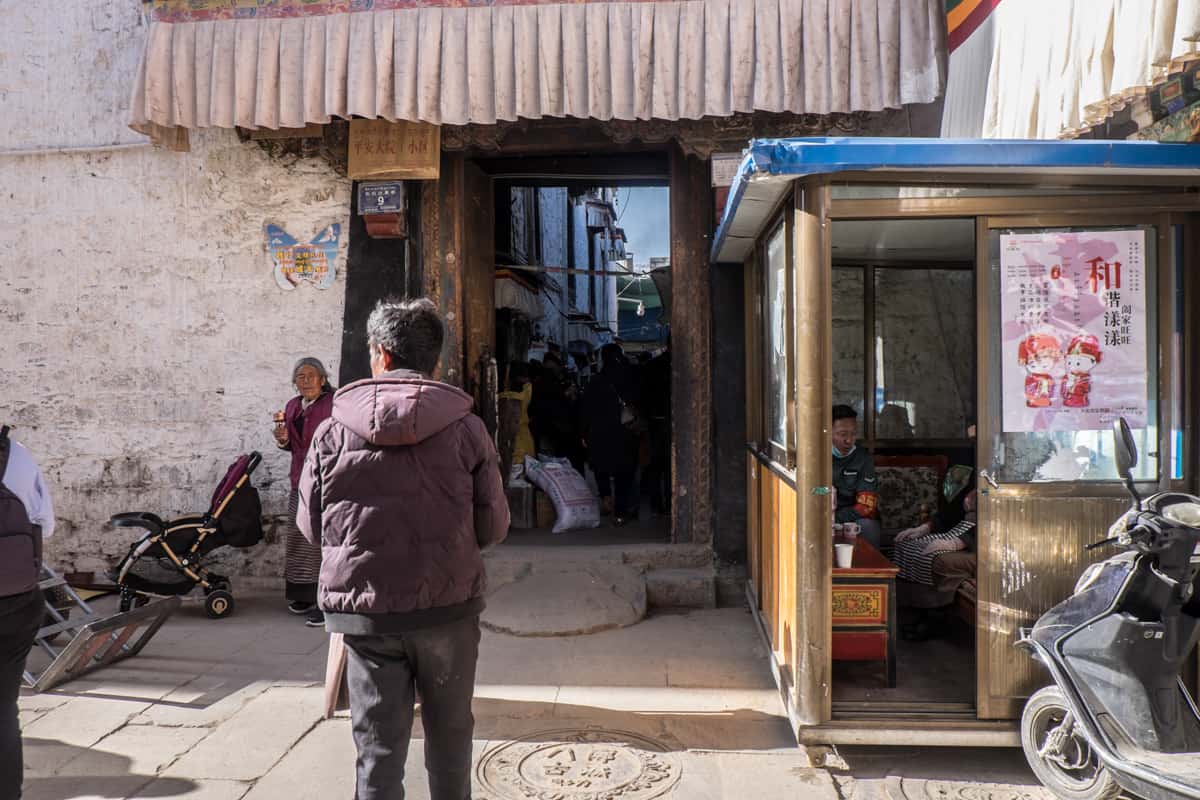
Norbulingka Summer Palace in Lhasa
The extra costs aside from the tour cost itself were:
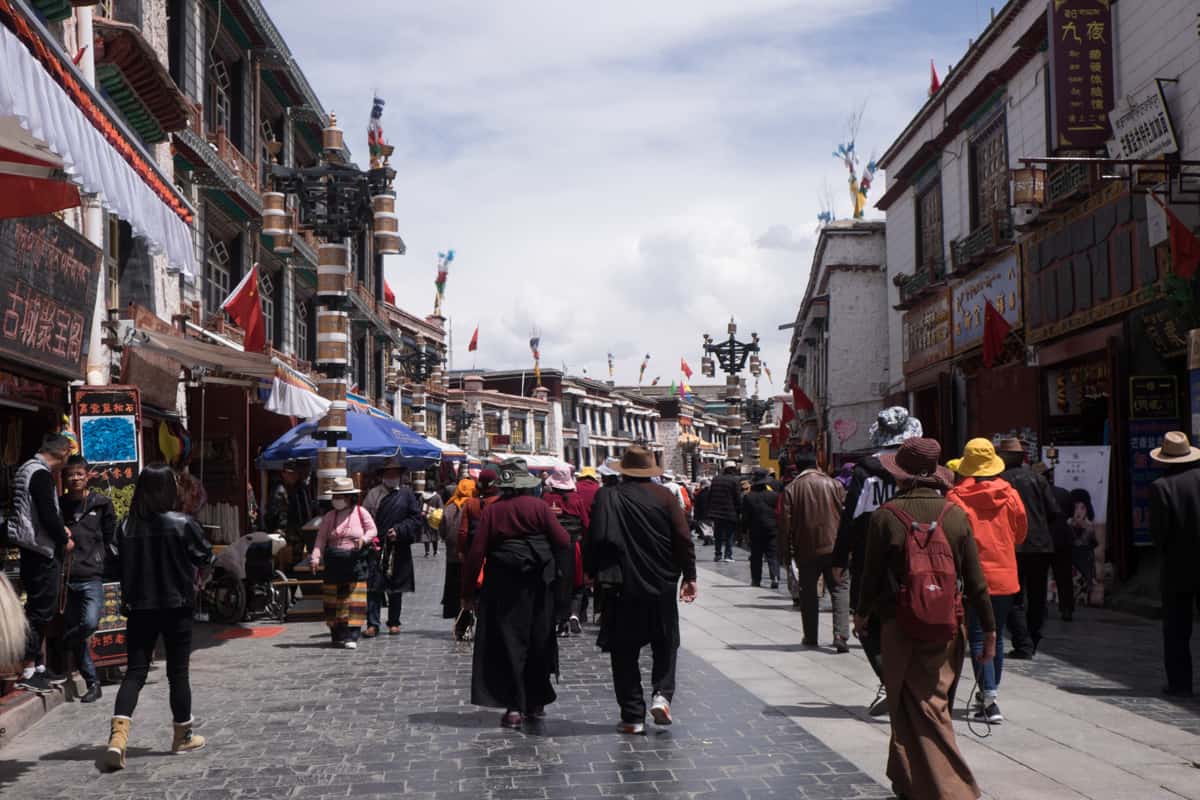
It was a gut-wrenching wait at the airport with just over one hour until our flight from Kathmandu to Lhasa waiting for the group visa to turn up, via a China embassy worker who delivers the paper via motorcycle. Our cheers were the signal that the adventure was just beginning.
Rombuk Monastary view to Tibet Everest Base Camp
Altitude sickness can occur in some people around the 2,500 m, but everyone is different. For example, I start to feel sick at 4,000m, and it has taken a few trips and treks to work that out.
To be able to travel Tibet is both a privilege and a different kind of travel experience that requires some degree of more profound observation. What was once closed off to outsiders and one of the most isolated cultures in the world is now an Autonomous Region of China, and therefore more tricky to traverse since you can’t travel there independently.
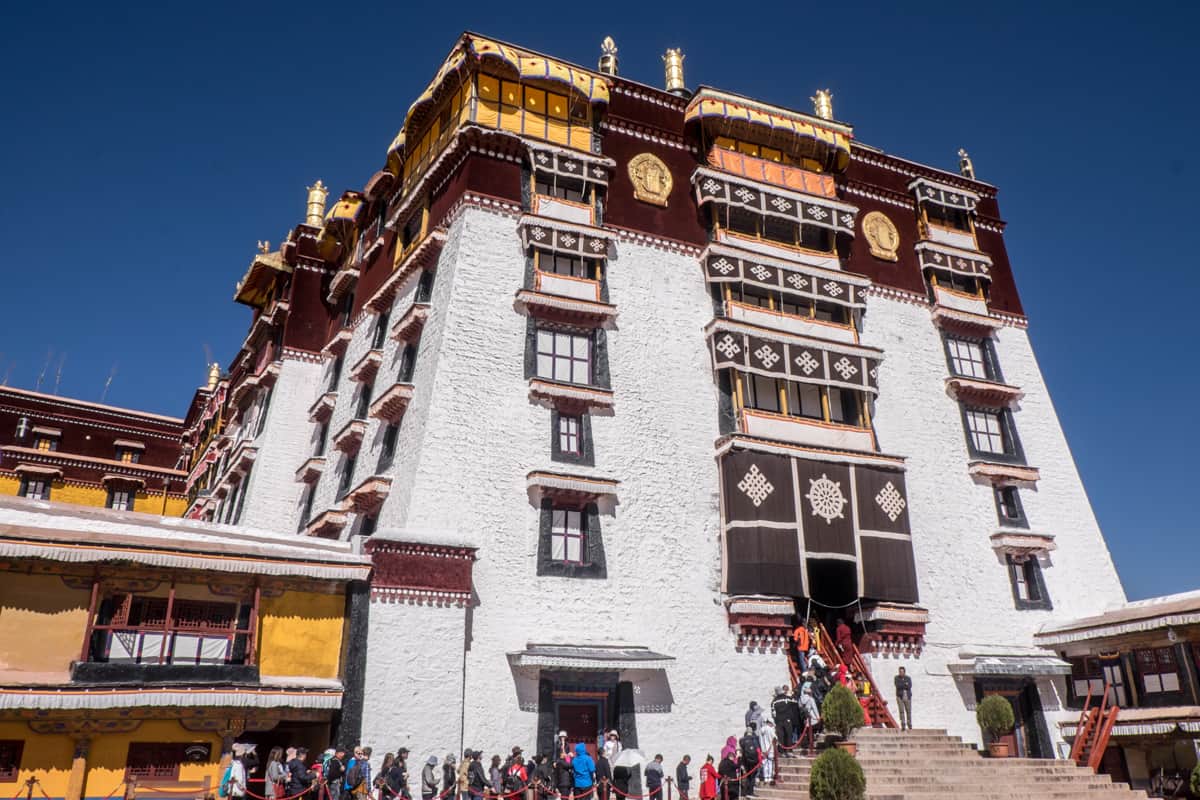
It’s about having the understanding that while there is plenty of things to see in Tibet, swaths of its original wonder exist no longer. Patches of a profound space we should not take for granted as visitors here when so much has already been lost.
How to Visit Tibet
Diamox tablets can be purchased in Kathmandu before the trip. However, we managed to find a herbal tablet version in Lhasa that we could begin taking as we were leaving Lhasa to prepare for higher altitudes.
The Gyatso Pass – the highest road in Tibet
Getting a Group Visa for Tibet
You can also only enter Potala Palace in your group and with your local guide, and you need to bring your passport for the restricted 50-minute viewing slot. Why such tight measures? This is a pillar of Tibetan culture and remained the primary residence of the Dalai Lama until the 14th (current) Dalai Lama fled to India in 1959. The Dalai Lama is a strong point on contention, which you will realise on many levels throughout your trip.
On the one hand, the Dalai Lama encourages travel there, to see the country first-hand and bring those stories home. That’s what I wanted to do. Your presence is a chance for Tibetans to know of the outside world and know that people can witness their beliefs and then return home and tell people about their incredible culture.
View of Mount Everest in Tibet
Gyantse used to be Tibet’s third-largest town. While its administrative status has diminished, it remains one of the last towns not wholly overtaken by Chinese influence and mass structure.
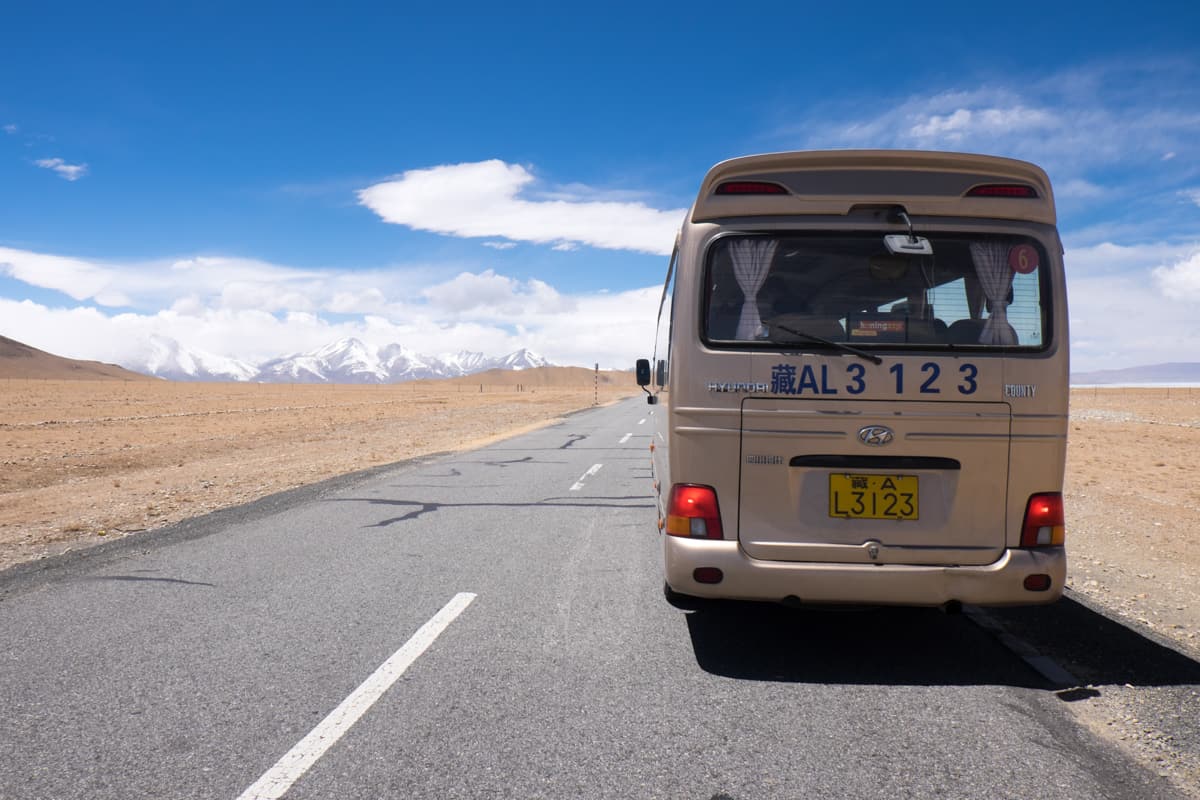
The cost also encompasses all elements of facilitation from visa organisation, the flight and point-to-point travel.
The images needed for the Tibet visa was tricky since nearly every person in our group had to get their passport photos redone that same evening. We were all briefed via trip notes beforehand regarding not having ears covered, needing a white background, no obvious make-up or any piercings. Yet, if there was even a little hair covering a tiny part of an ear, the photo had to be retaken. So much so that the women in the group were clipping every strand of their hair back.
How to Get to Tibet – Arrival and Getting Around
There are three ways to travel Tibet – via a flight to and from Lhasa, or by overland via train or private vehicle.
Travel Tibet from China
For example, when some excited Tibetan ladies wanted their photo with me, it was a form of interaction that created some level of paranoia. So I kindly shut down the situation more quickly than I would generally. It’s better for everyone and the reality of where you choose to travel and adhering to rules.
Travel Tibet from Nepal
Choosing exactly how to travel in Tibet and embarking on this particular trip goes hand in hand with travelling responsibly and supporting Tibetans in keeping their culture and traditions alive.
It’s better you do your background research at home before visiting. However, what is left forms a network of some of the most significant sites of Tibet, which you get to enjoy throughout your journey across the country.

It also means adhering to specific rules and regulations at particular sites of huge significance. The only time you will encounter inner-city police checkpoints is in Lhasa at the Jokhang temple. Given its large-scale importance, the temple has been the leading site of protest. Therefore, it has become the standard procedure for the square outside of the temple to be guarded and for the army and plain-clothed officers to be present on the Barkhor sacred Kora path.
Getting Around Tibet
You cannot travel independently in Tibet and can only do so with a private guide as part of a group. Therefore a third-party organiser must obtain a group visa for Tibet before entry.
Norbulingka (Summer Palace of the Dalai Lama) was founded by the 7th Dalai Lama in 1755 and is the site where the 14th Dalai Lama made his escape in 1959. It’s known for having the largest human-made garden in Tibet, and so its grounds are great for visiting also.
One of the few Tibetan owned restaurants
Chinese surveillance and military presence is something you too may notice, including CCTV cameras and plain-clothed guards that often appear close to tourism groups when visiting major sites. These systems of monitoring are not something to be afraid of, and you quickly get used to as a part of travelling here.
The Best Time to Visit Tibet
Elevation 4,300m
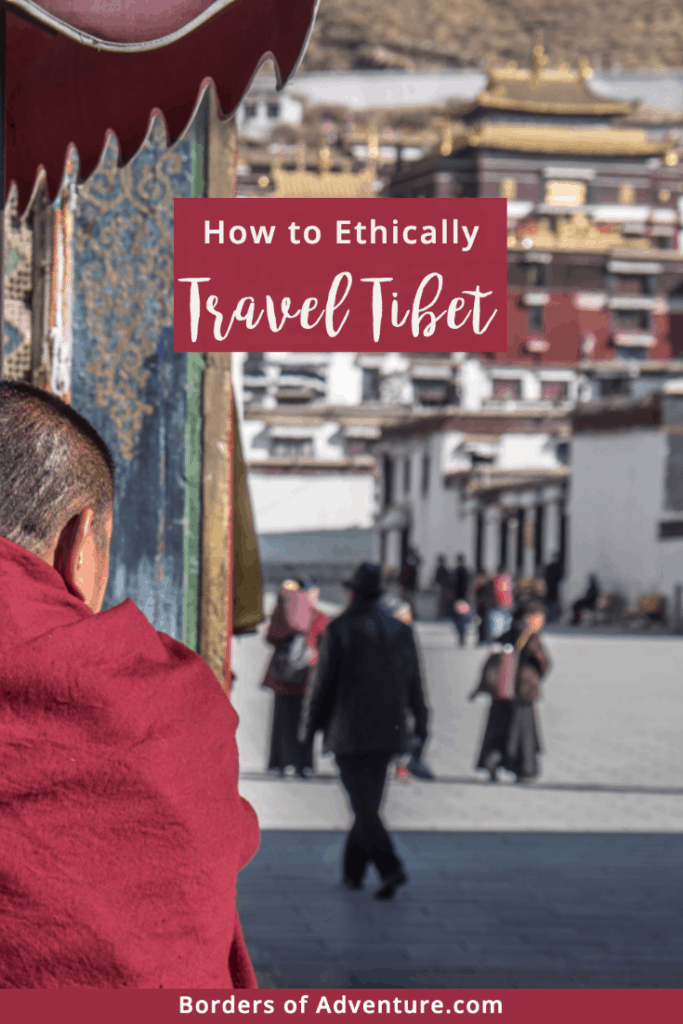
Do not take any photos of police, army or other military personnel or set-up. If you see anything while taking pictures of sites, buildings and street-views, lower your camera and wait, or move on.
With all these elements in mind, regarding group travel and a group visa, a private guide and vehicle, alongside organised activity, visiting Tibet isn’t a budget experience.
The drive to the Rombuk Monastery was an endless stream of white-capped mountain scenery, with everybody in the vehicle full of excitement with every glimpse of Everest as we rounded corners and valley walls.
How Much Does it Cost to Travel to Tibet?
You’ve made your decision to go and experience this destination steeped in intrigue, but what’s it really like to go to Tibet?
This is How to Travel Tibet – The Reality of the Roof of the World
Better known as being the traditional seat of the Panchen Lama (the second highest order of the Dalai Lama), Shigatse is on the map because its home to Tibet’s best-preserved Monastery Tashilompo Monastery where once, 4700 monks lived.
Keep to your itinerary and times. The guide has to ensure the group (and vehicle) reports at designated police checkpoints on the set days of your city departure and new city arrival, and by a specified time.
Take crisp, new dollars with you for exchange in Tibet to Chinese Yuan. The ATM didn’t work for everyone. It was also impossible to get a large number of Rupees changed to dollars while in Nepal.
- Cost of the Nepal visa ($30 for 15 days, $40 for multiple entries if staying for more days before or after your trip)
- Cost of the Tibet Visa (Various according to Nationality)
- American and Brazilian: 195 USD per person
- Canadian and Romanian: 150 USD per person
- Israeli: 104 USD per person
- All other nationalities: 114 USD per person
- Food and drink costs (Approximately €400 for two weeks)
- Money for extras such as souvenirs and some entry prices for extra excursions or activities
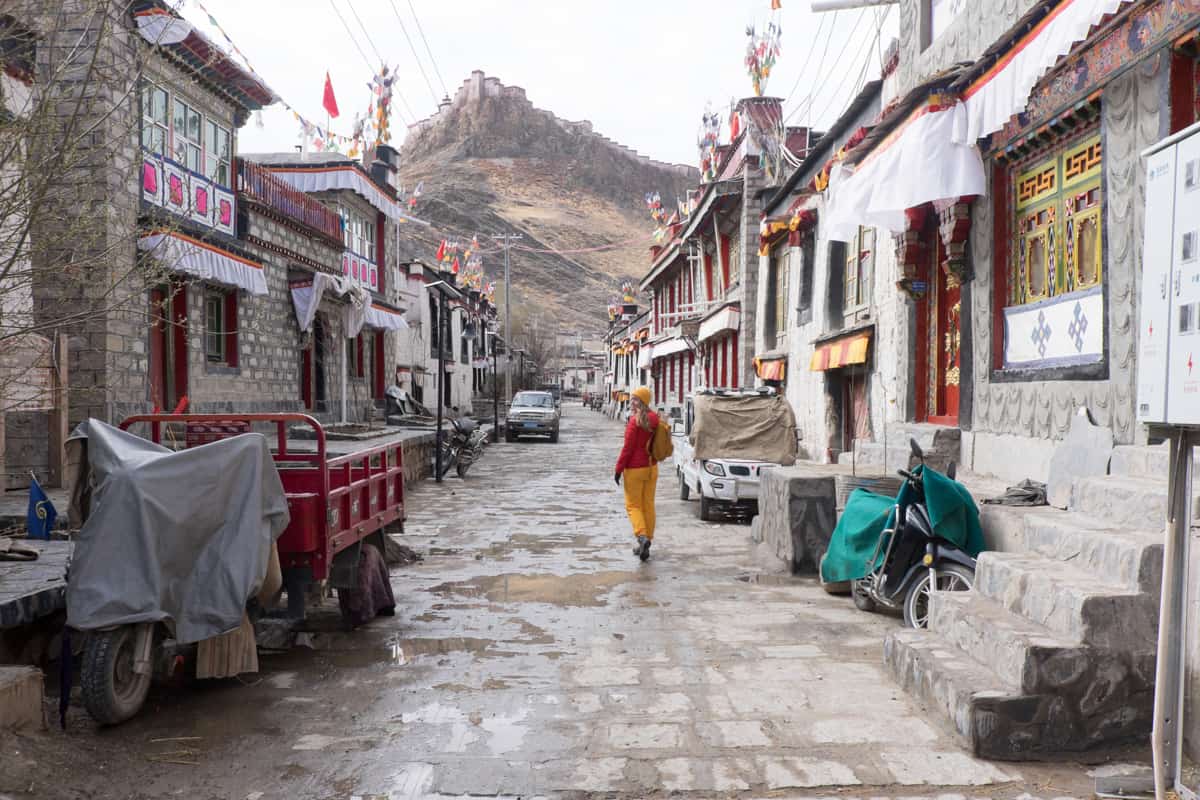
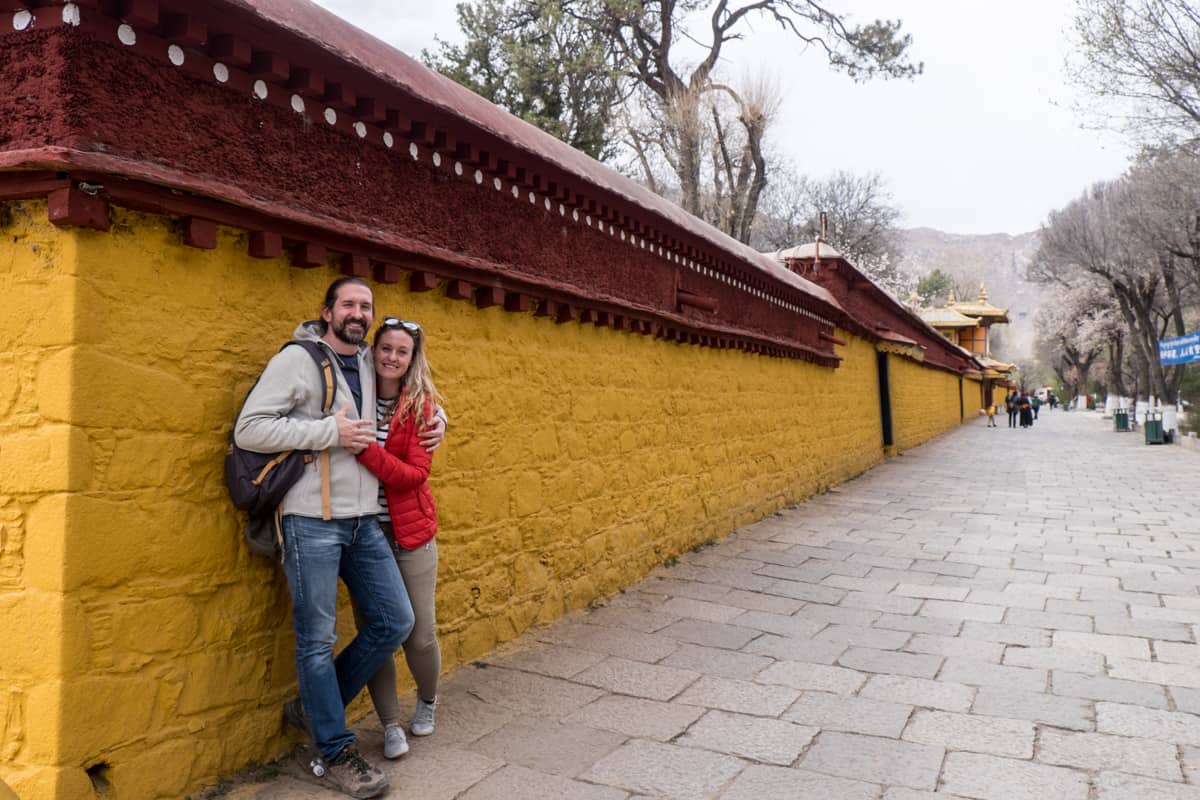
Is Tibet Safe to Travel to?
As per the rules of the group visa and organisation, you can only travel around Tibet with an organised guide and private vehicle and driver.
On the way to the Everest Base Camp area you get to visit the Gyatso Pass at 5248m – the highest pint you will be on the trip. Another accolade to rack up here is to say you’ve used the highest toilets on earth.
A typical checkpoint in Lhasa, Tibet
Solo travel and use of public transport are not permitted for foreign travellers. We did sample the local bus in Lhasa for a few stops, but we were with our guide.
I chose this particular tour because of it’s Nepal start and endpoint, as I did not want to travel from China for my ethical reasons about where I spend my money. Nepal is also a country close to my heart, where I encourage people to visit and contribute to the local economy.
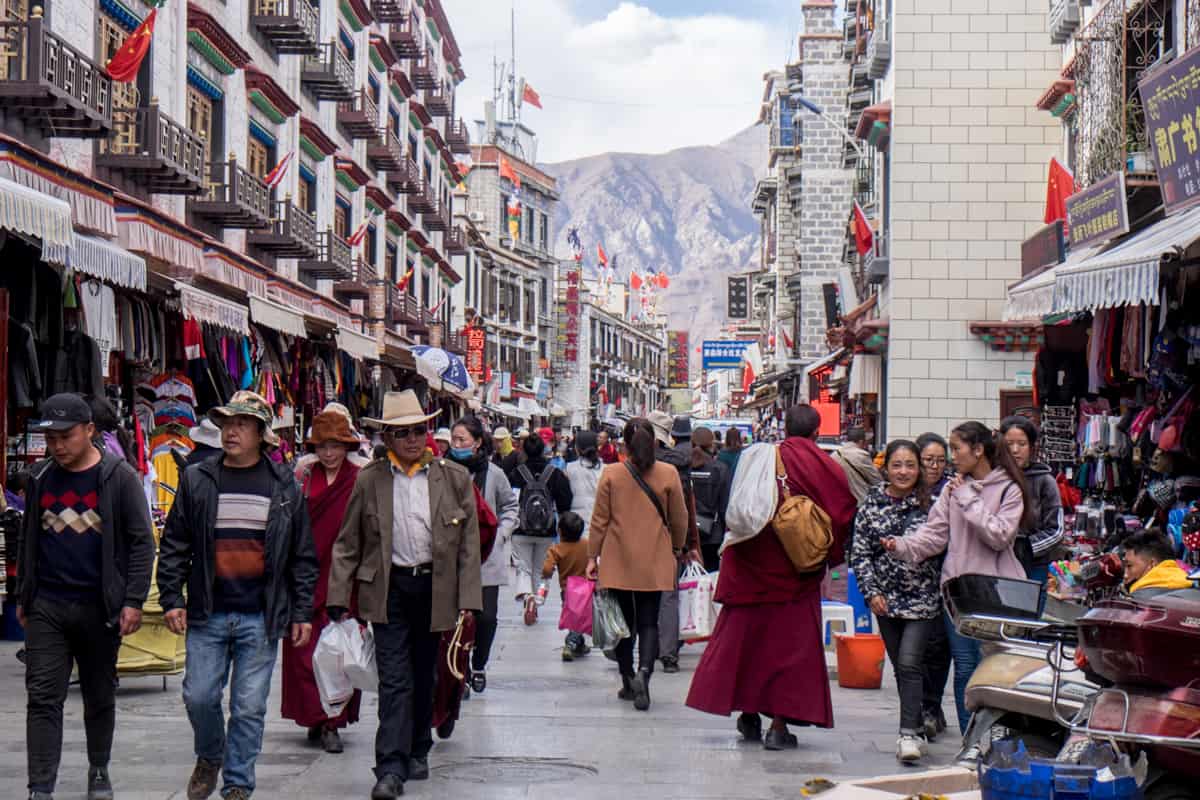
Do not engage in any kind of political discussion with any Tibetans you meet. All tourism movement is monitored, even if you think at any given moment that it is not, and such debate has far worse consequences for Tibetans.
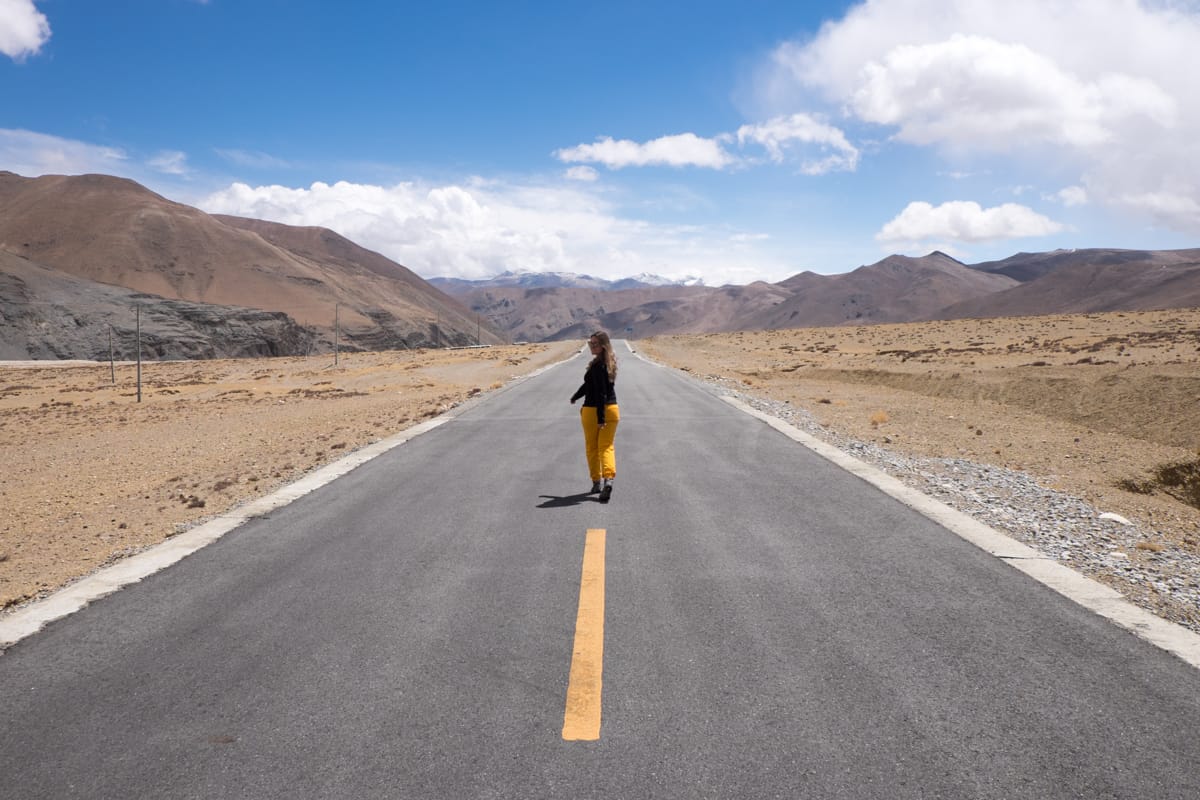
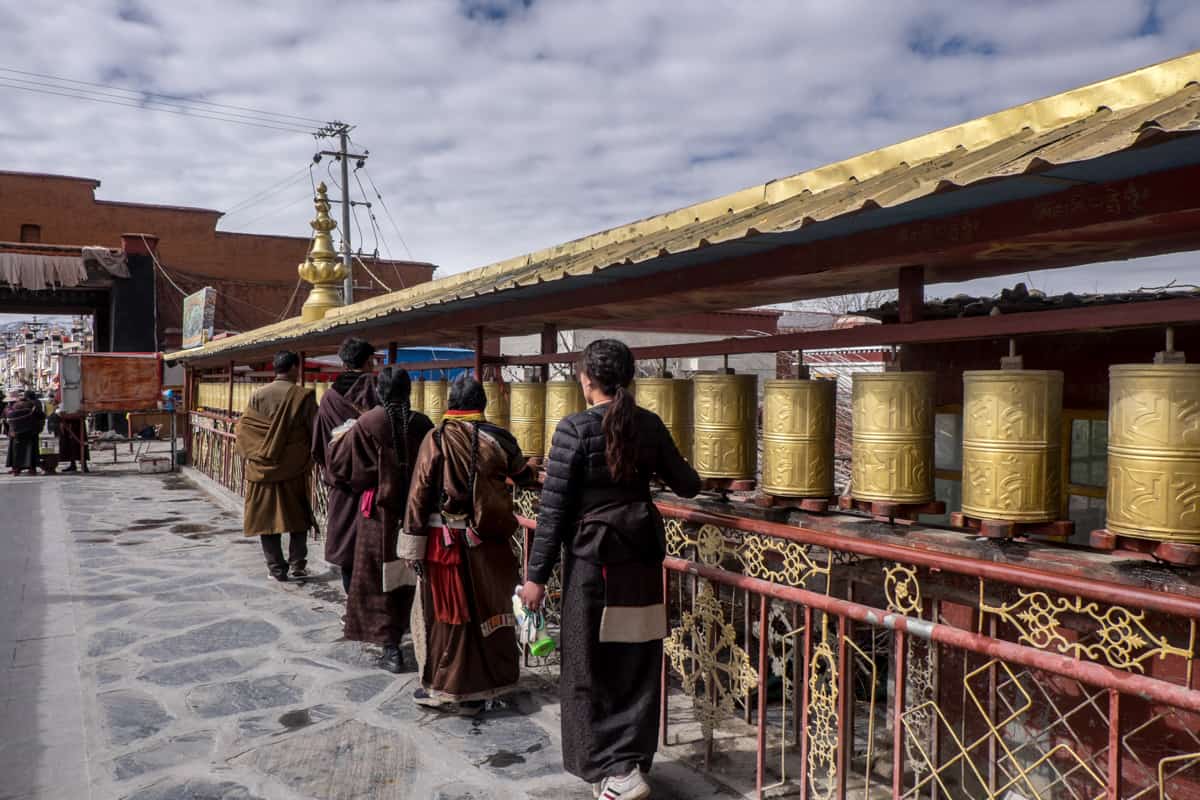
However, it pays to be aware of where you are and what could get you and Tibetans into trouble. This means:
This private guide and vehicle also apply since you must arrive at designated police checkpoints in your route by certain dates and specific times. At times you will be asked to get out and present your passport one by one, in your group before continuing with the next leg of the journey.
Responsible Travel in Tibet
You will hear from your guides as you make your way through the region that thousands of Tibetan sites were destroyed during the Cultural Revolution after the Tibet Autonomous Region of China was formed 60 years ago. It is patchy information since the history of the country or mention of the Dalai Lama cannot be spoken of in detail or publicly, even if it is evident to you as a visitor.
A traditional Tibetan village street in Gyantse
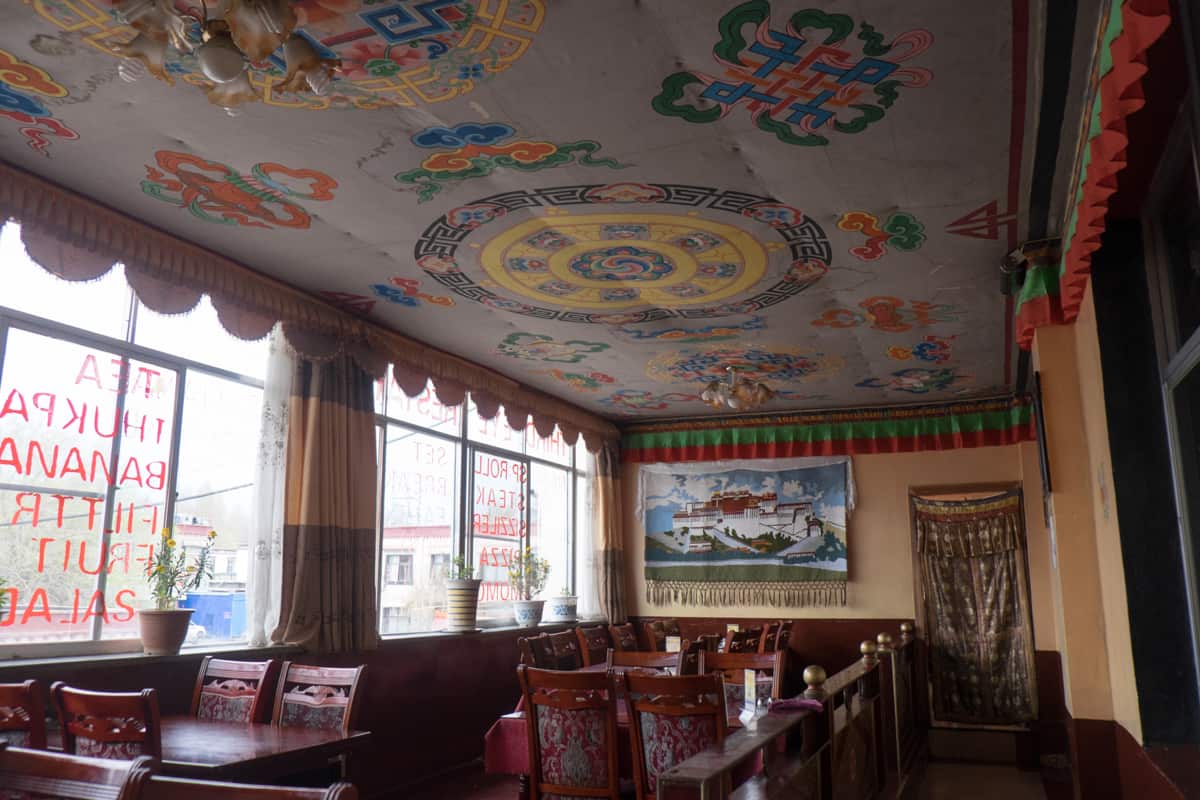
Elevation 4000m
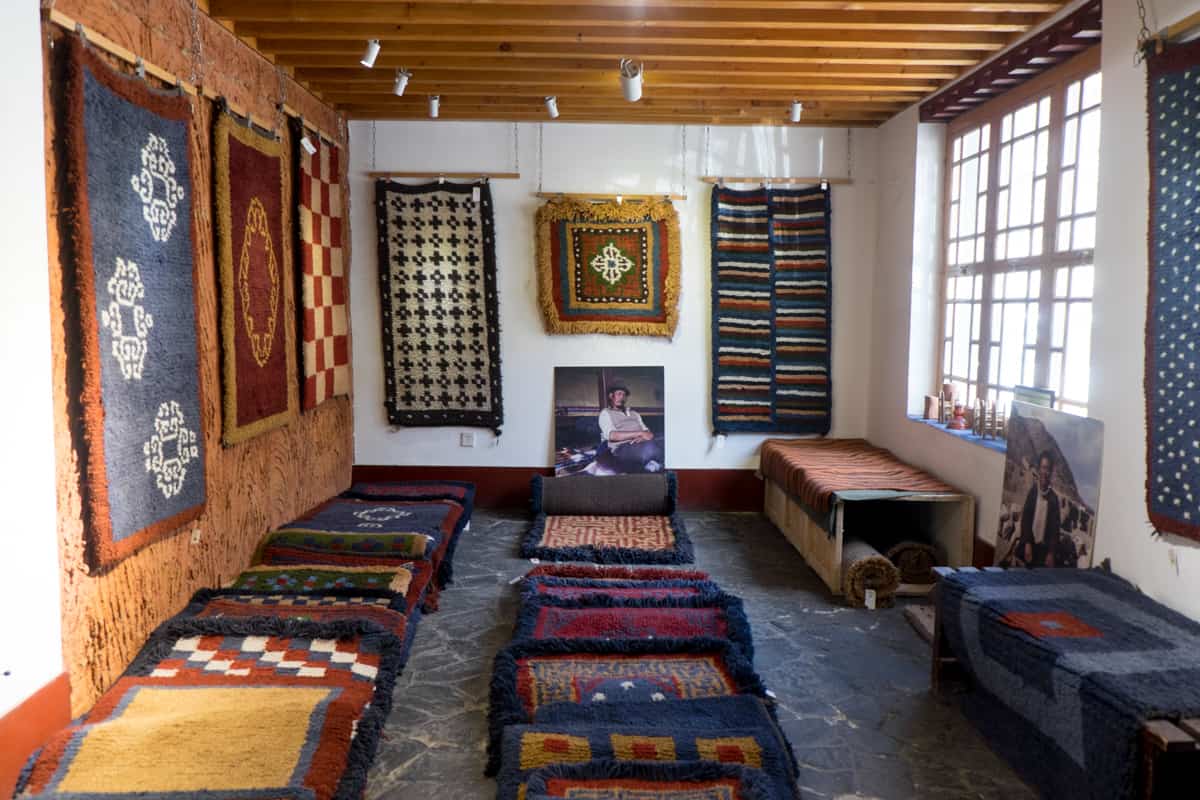
The question of whether it is ethical to visit Tibet is a justified one, but without an easy answer and one that should be made from a personal but informed choice.
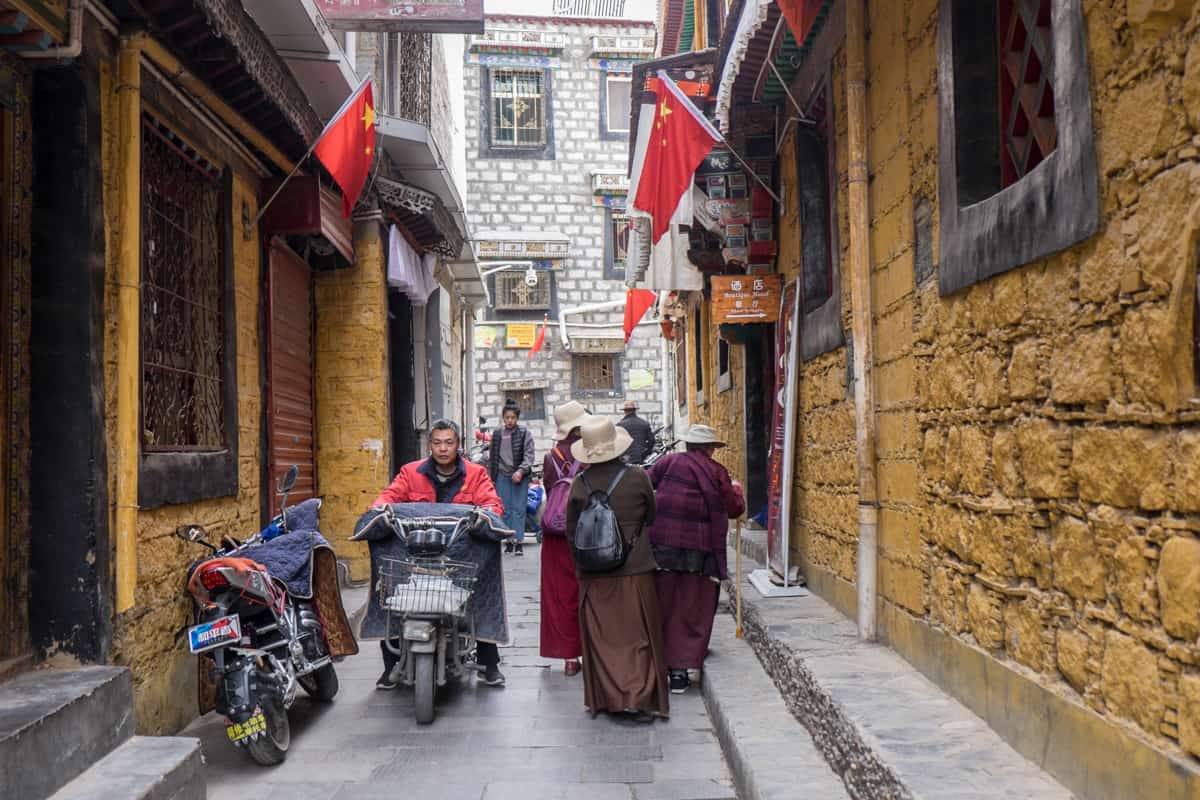
A Tibetan woman in a traditional village in Shigatse
The queue at the entrance to Potata Palace, where visits are restricted to a 50-minute viewing slot

I chose to travel to Tibet from Nepal, soaring over the Himalayas via a flight from Kathmandu to Lhasa. This flight route also allowed for the grand adventure of being able to overland in Tibet and travel back to Kathmandu in a loop that took around ten days.
READ MORE: Everest Base Camp Trek, Nepal – Reaching the Top of the World
Where to Visit in Tibet?
Tibet isn’t closed for tourism because of weather, more so for the New Year’s Losar Festival in late February or early March and is closed during political dates such as the anniversary of Chinese occupation at the end March.
Lhasa
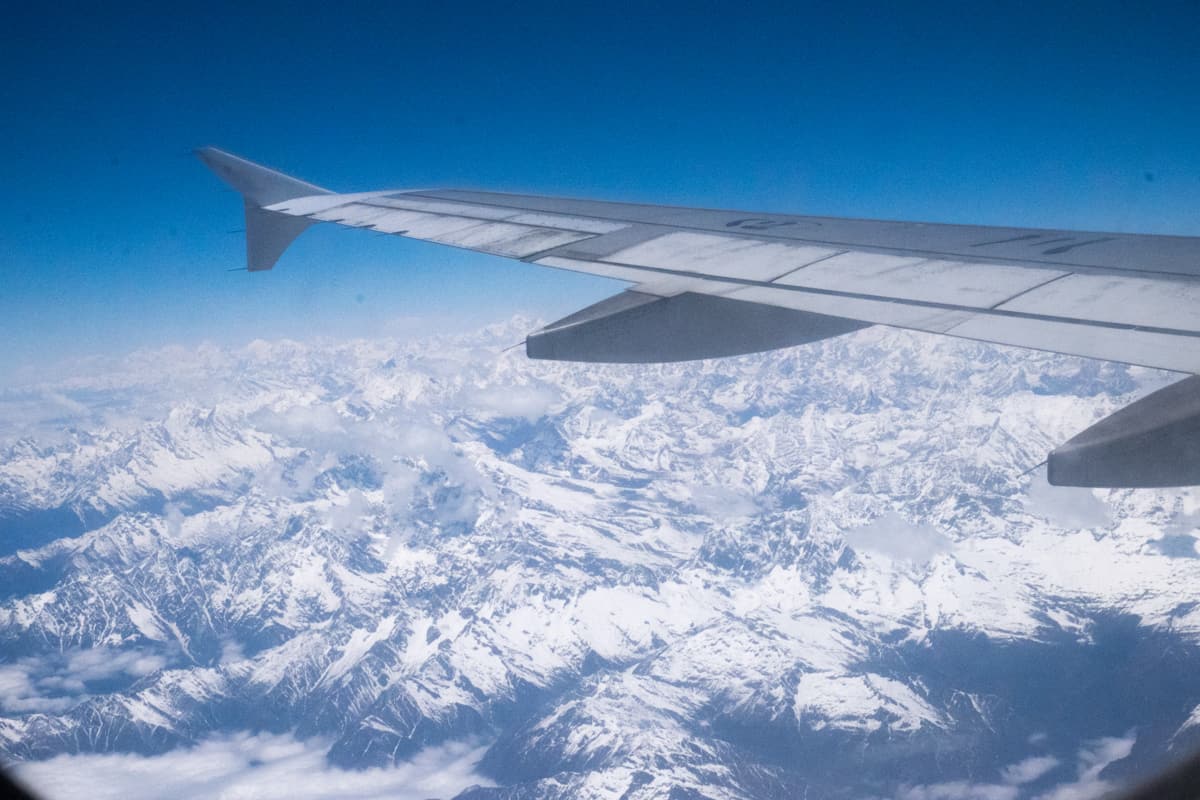
Avoid intense activity when you get to Lhasa. Our trip specifically had four days on the ground to ensure enough time to acclimatise and take things slowly. Stroll, and rest when you feel your body is getting tired. It’s always about listening to your body.
Be aware of your body as you slowly climb into higher altitude. Our G CEO carried a finger pulse monitor, and each day we wrote down our heart rate and oxygen levels. This daily test allowed him to monitor anyone in the groups who could be sick or face any potential issues ahead of time.

The Tashi Lhunpo Monastery in Shigatse Tibet

For further information on the Tibet tour, including the departure dates during the seven-month travel window, see the High Road to Tibet trip overview here. I travelled with G Adventures as one of their Wanderers ambassadors, to discover destinations responsibly and where tourism money and practice is used for social good.
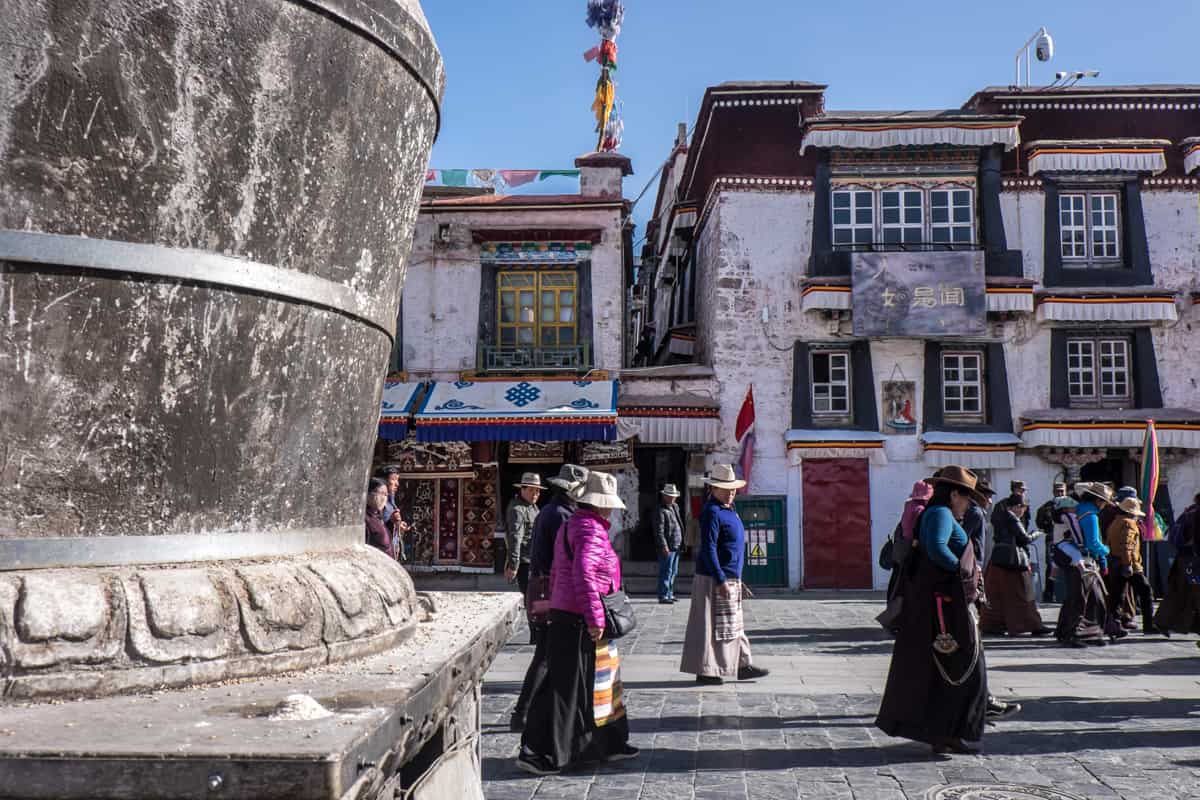
Travel Tibet and see it from a different perspective
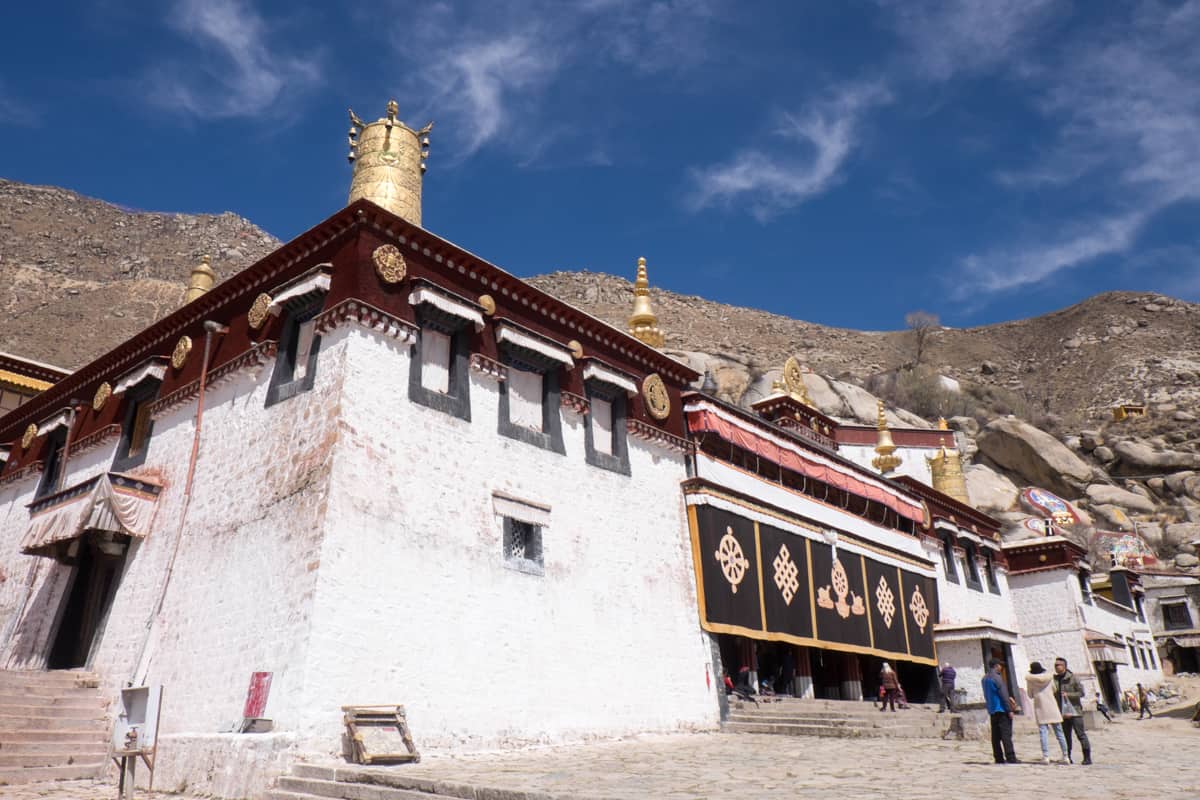
Inside the Jokhang Temple in Lhasa
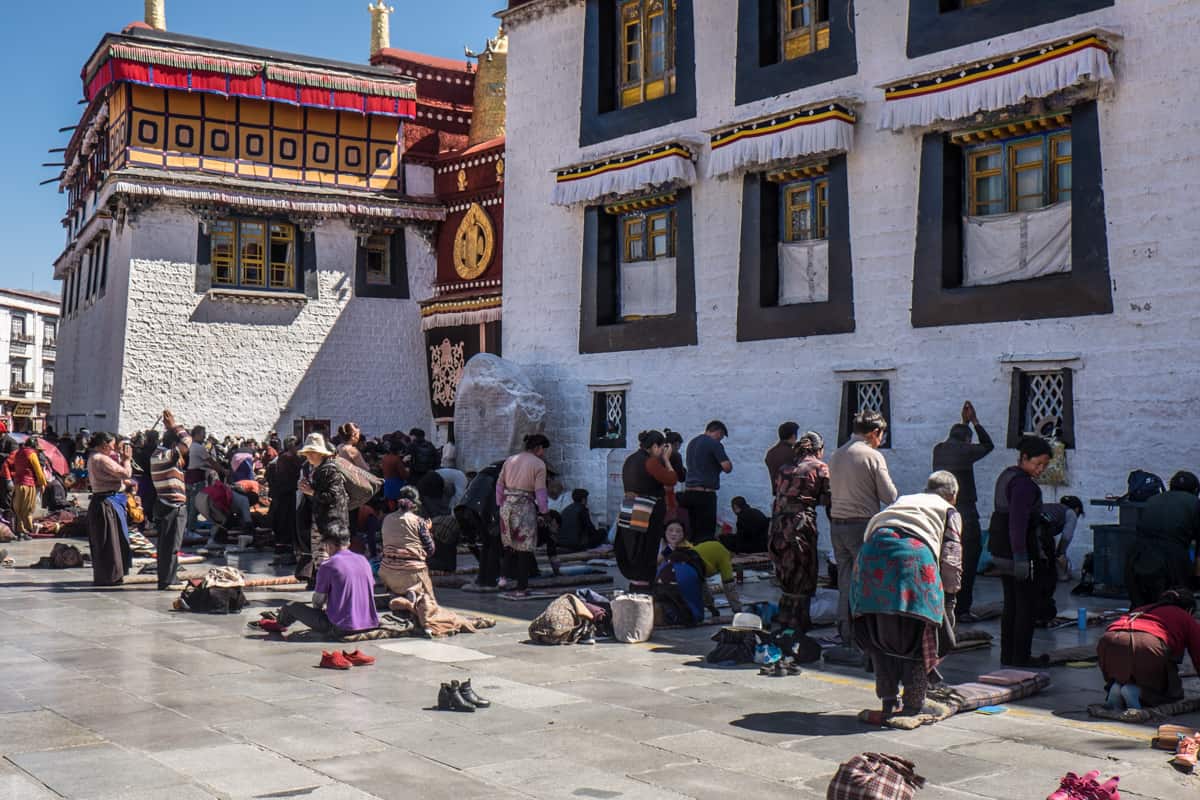
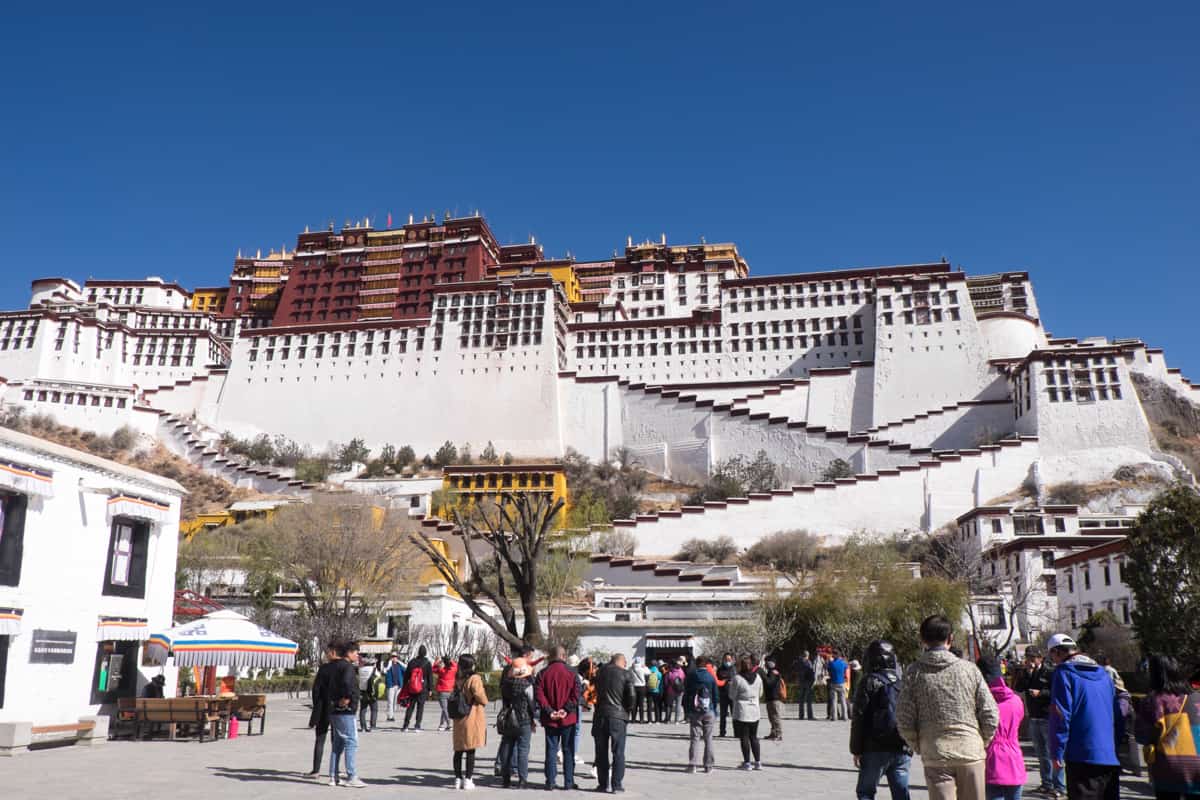
Elevation 4980m
Praying Tibetans on the floor outside the main entrance of the Jokhang Temple
Views over Lake Yamdork, Tibet
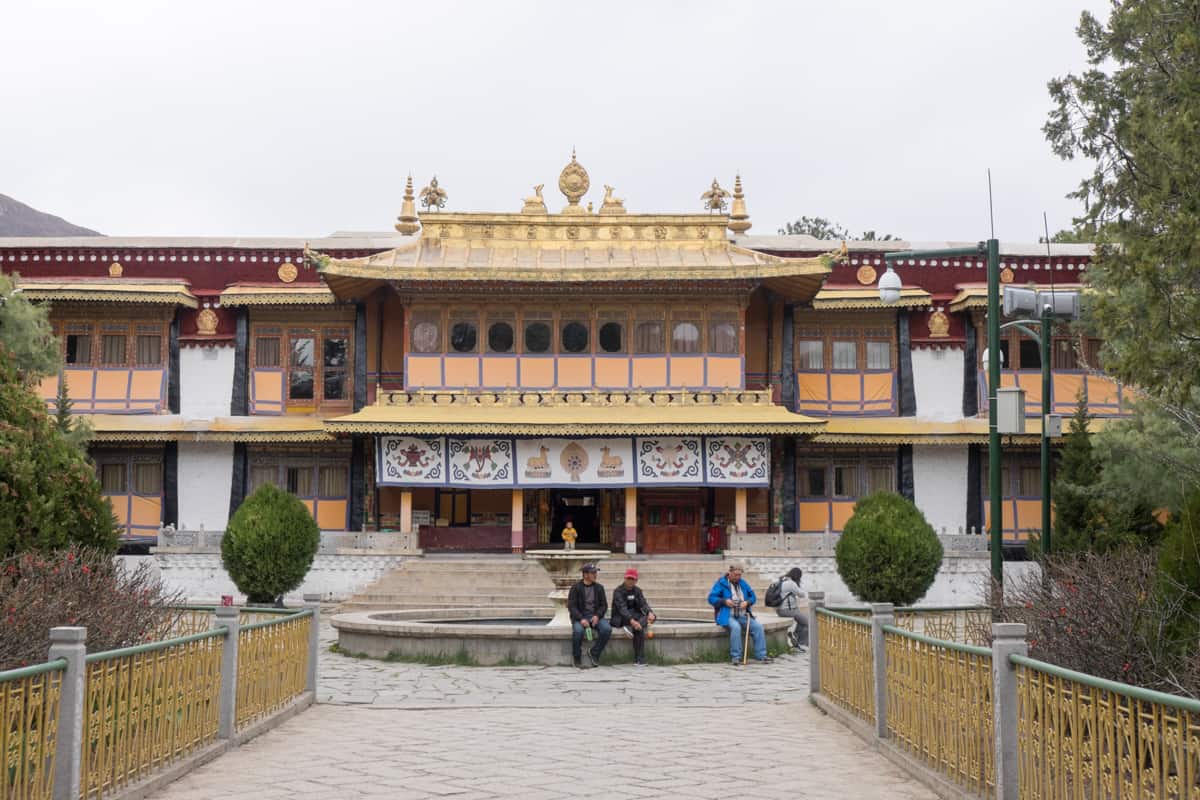
Here’s how to make the most out of your Tibet visit, alongside logistics and how best to experience and support the ancient Tibetan culture and its people.
Tibet’s second-largest city of Shigatse is a two-hour drive from Gyantse.
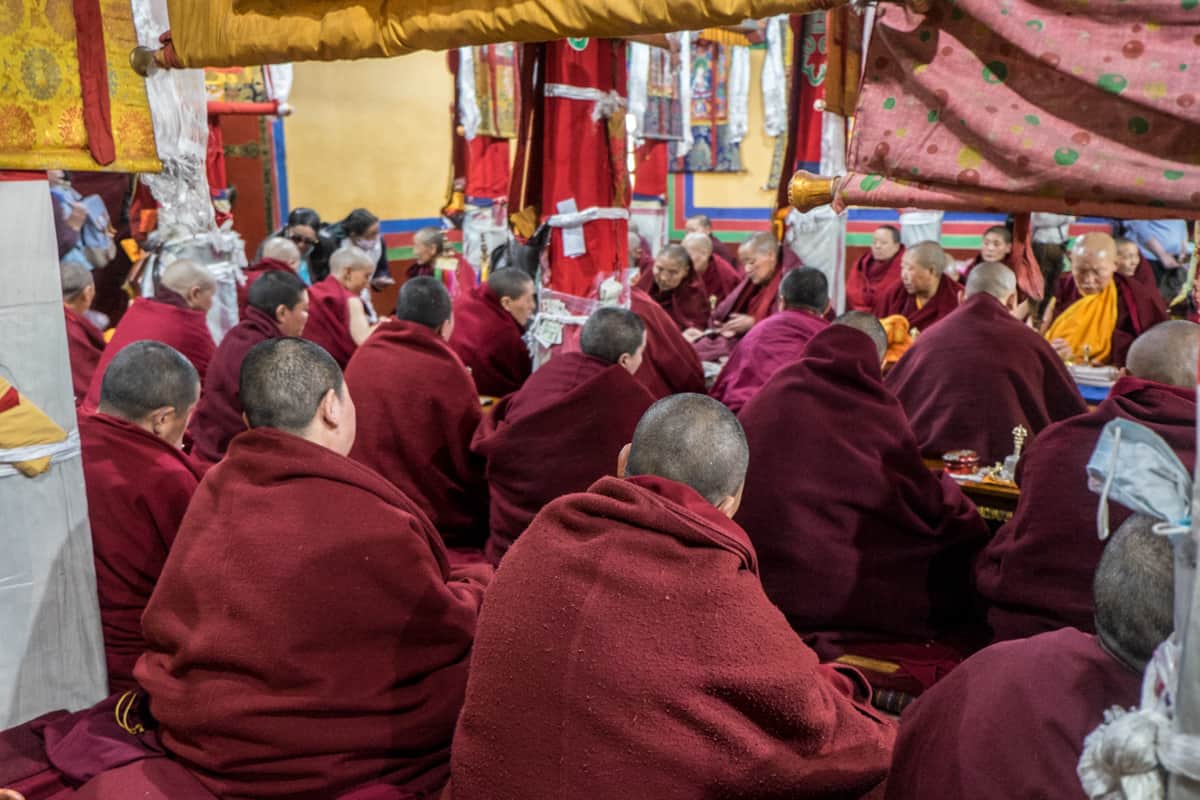
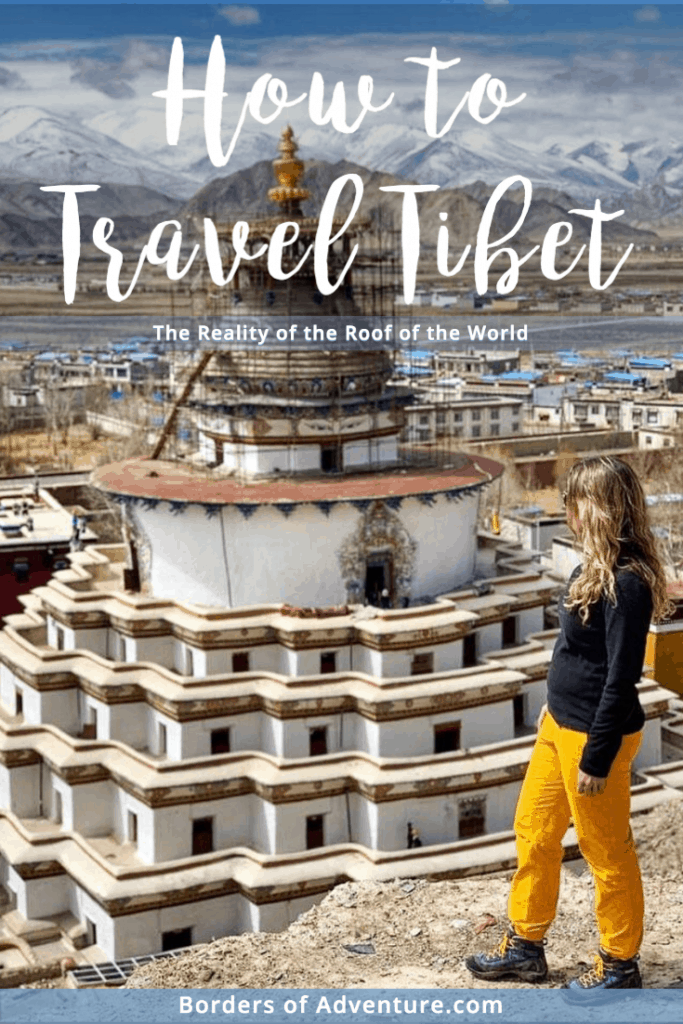
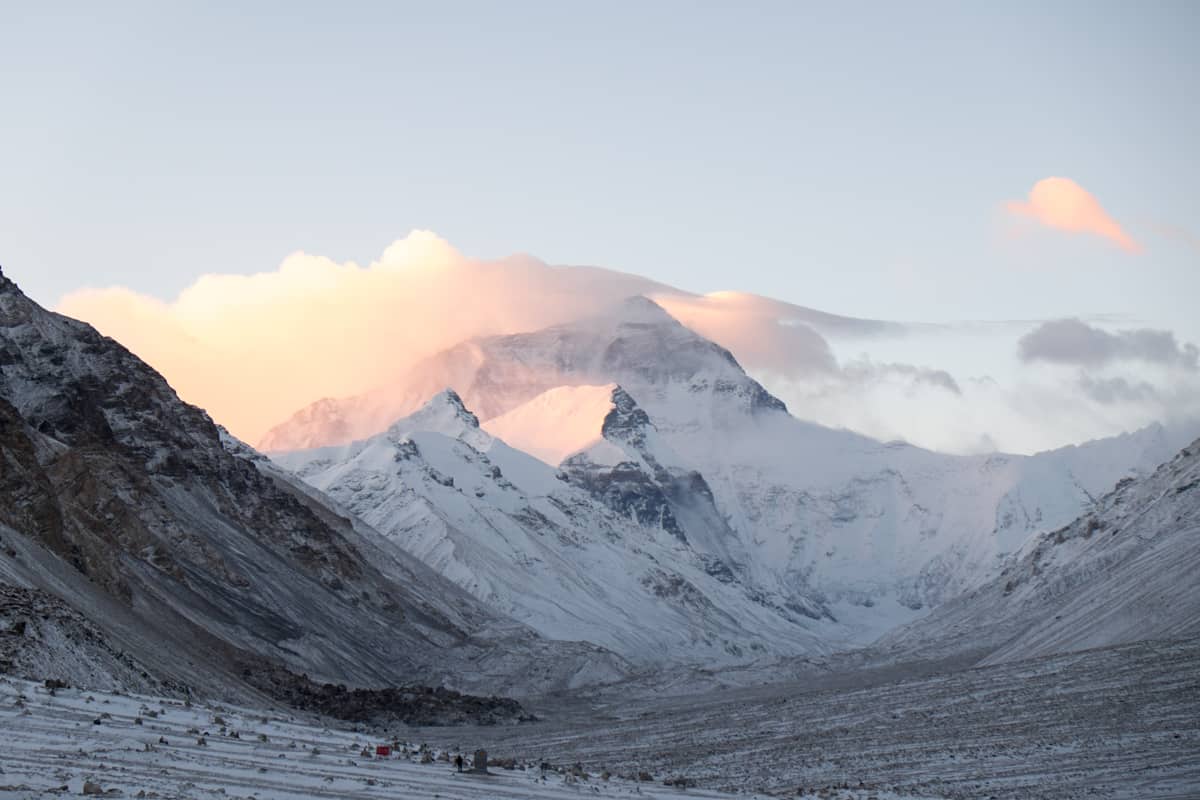
Gyantse
We were also encouraged to visit Ani Tsamlchung Nunnery to support the nuns. The Chinese government does not support the nuns, although the monks get paid a form of salary now. Therefore the cost of the ticket helps to maintain the nunnery, as does the funds made from supporting their handicraft store and teahouse, the latter of which is a truly local experience.
The nature of an overland trip in Tibet means a lot of roadside stops for viewpoints and toilet stops. Therefore, forms of tourism enterprise have sprung up in key spots, and while buying food and souvenirs is fine, don’t engage in the practice of photography with the Tibetan Mastiff dogs. Chained and poorly treated, this tourism gimmick is far removed from any level of positive animal welfare and participating in it encourages its continuation.
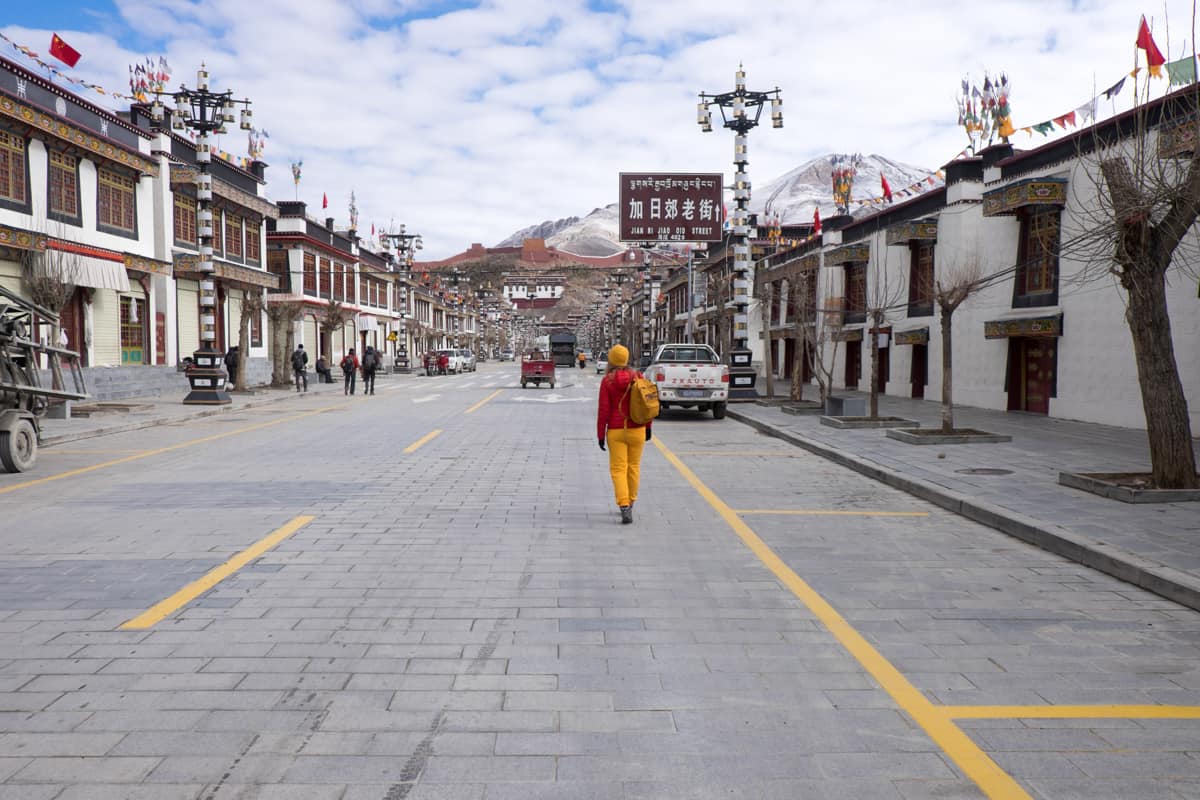
Those who join groups in China fly mainly from Beijing or other cities on the flight circuit to Lhasa. Taking a train to Tibet is doable only from China via one of the following cities – Beijing, Chengdu, Guangzhou, Shanghai, Chongqing, Lanzhou and Xining- and is subject to your particular itinerary and booking.
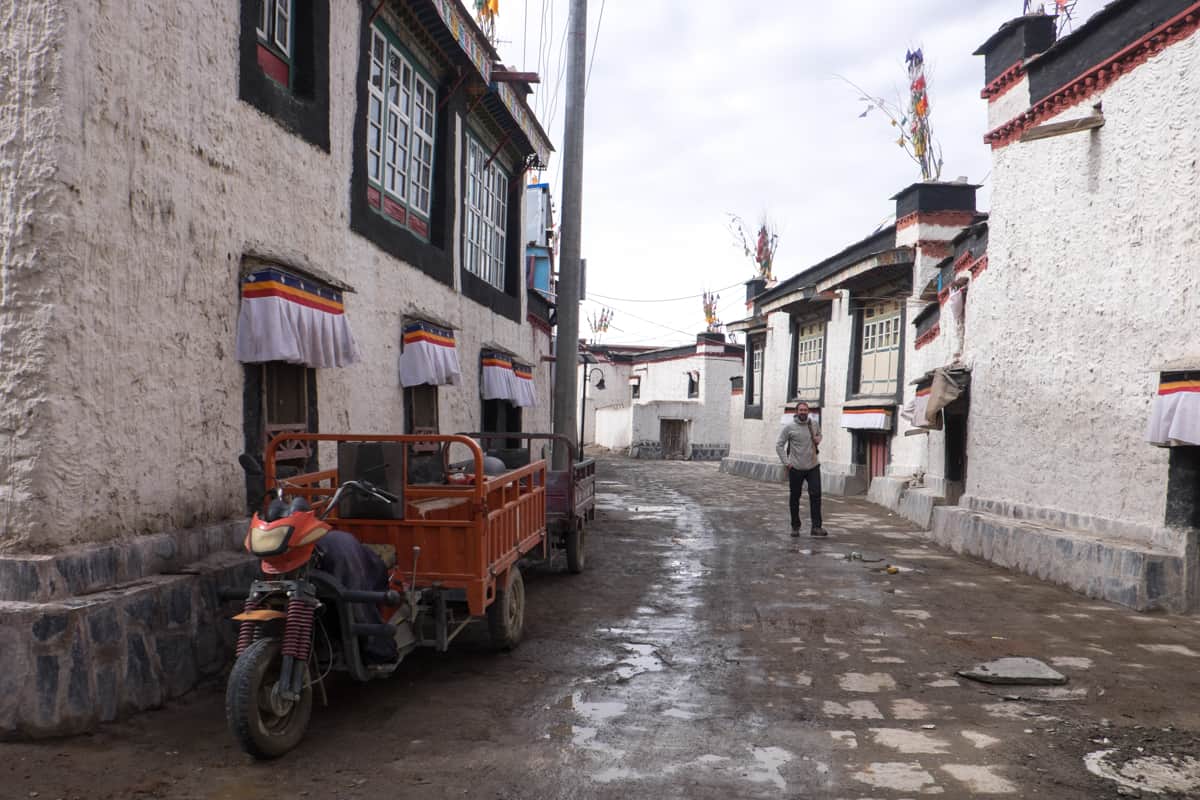
Tibet is an emotional dive into an ancient Buddhist culture and a journey through the high lands of a Himalayan plateau. A sensorial spectacle on multi-levels that you won’t ever forget.
Three days before our scheduled flight to Tibet, our group met in Kathmandu to submit details for the processing of the group visa.
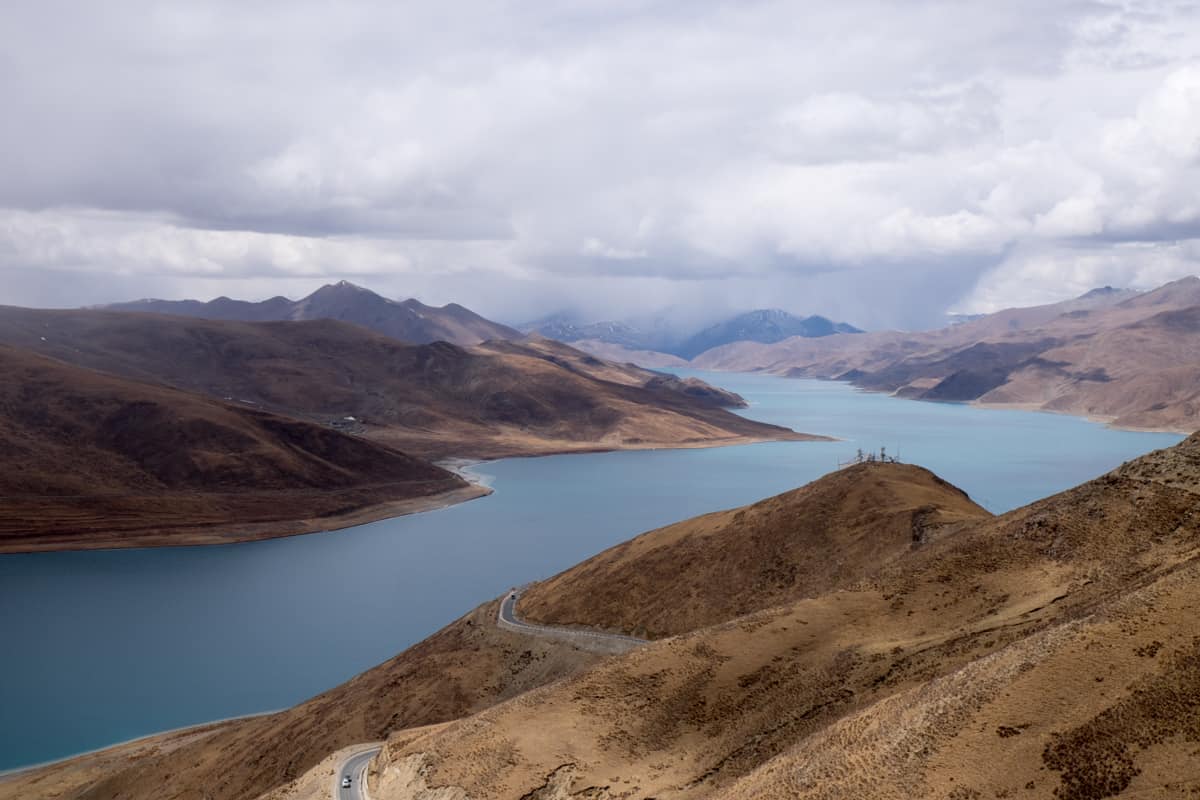
What remains of old and sacred Tibet – that was left untouched after China’s occupation since 1950 that turned Tibet into what is now known as the Tibet Autonomous Region – is a testament to its mysterious and spiritual history and the retelling of it.
However, with prices ranging from €2,200 – €2,800 (dependent on what time of the year you go), Tibet is a once in a lifetime opportunity.
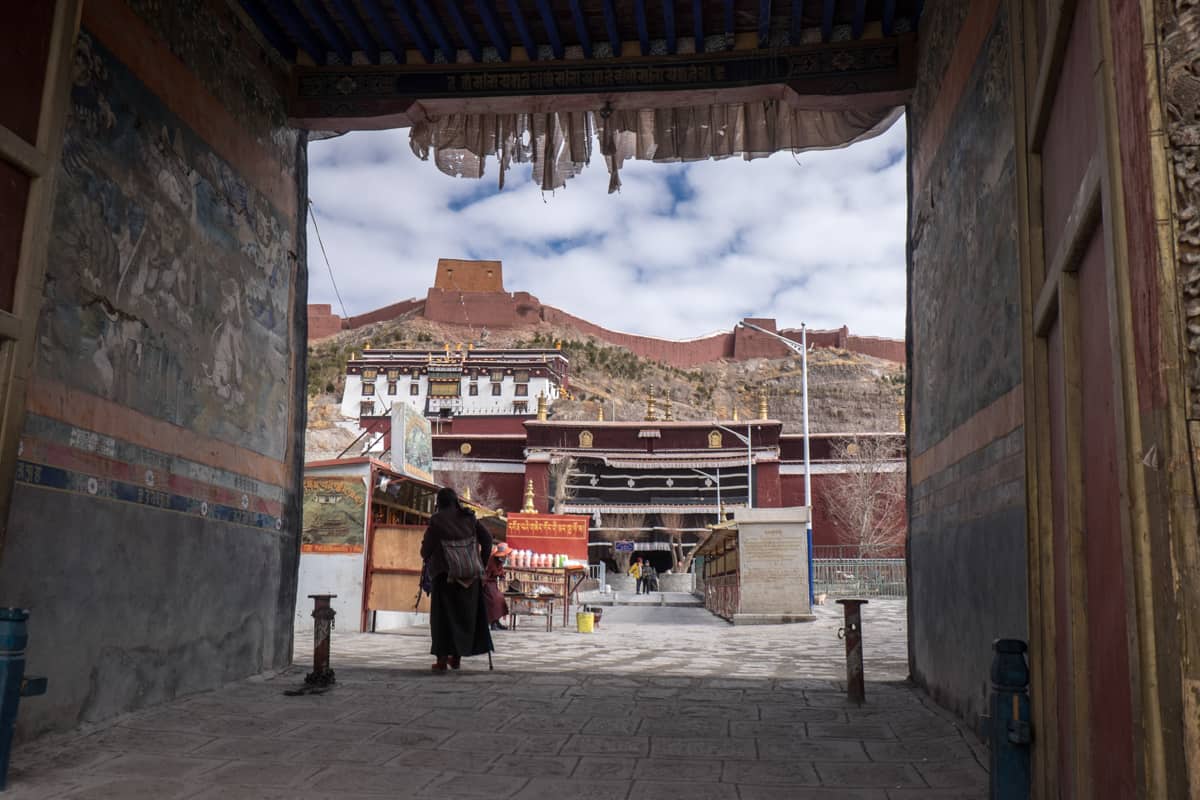
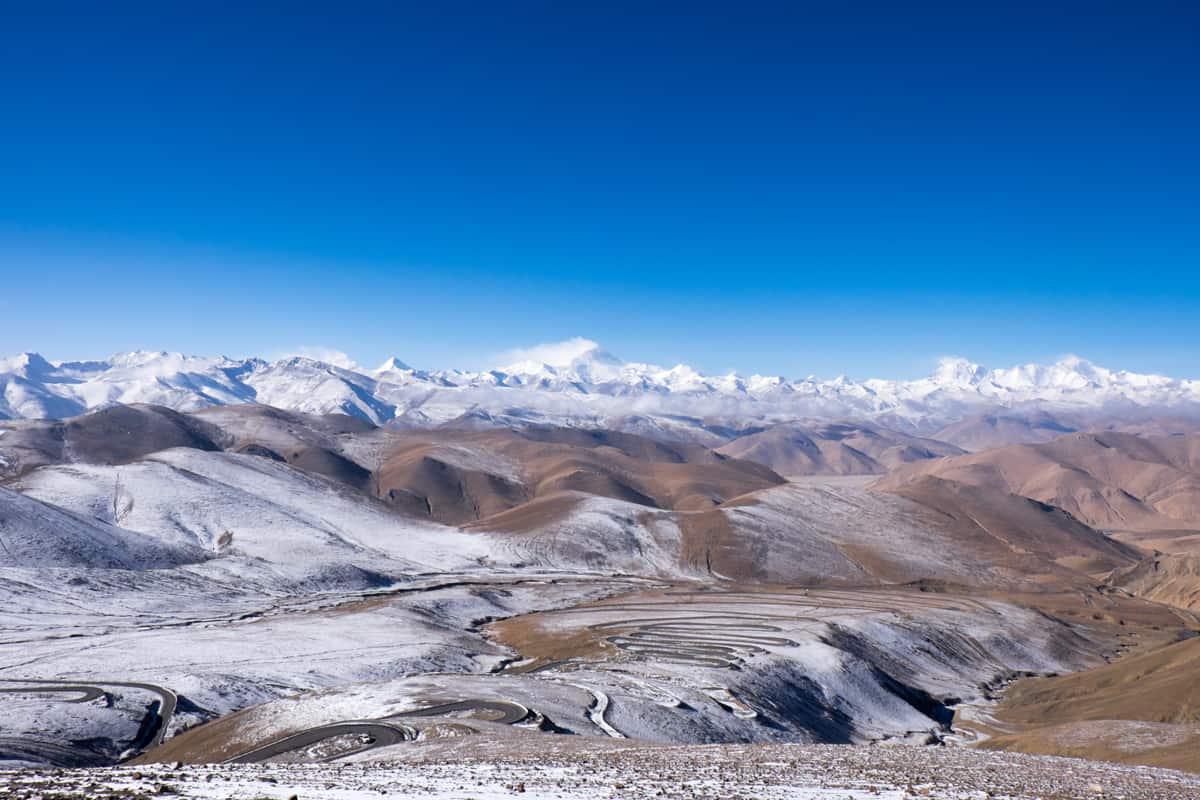
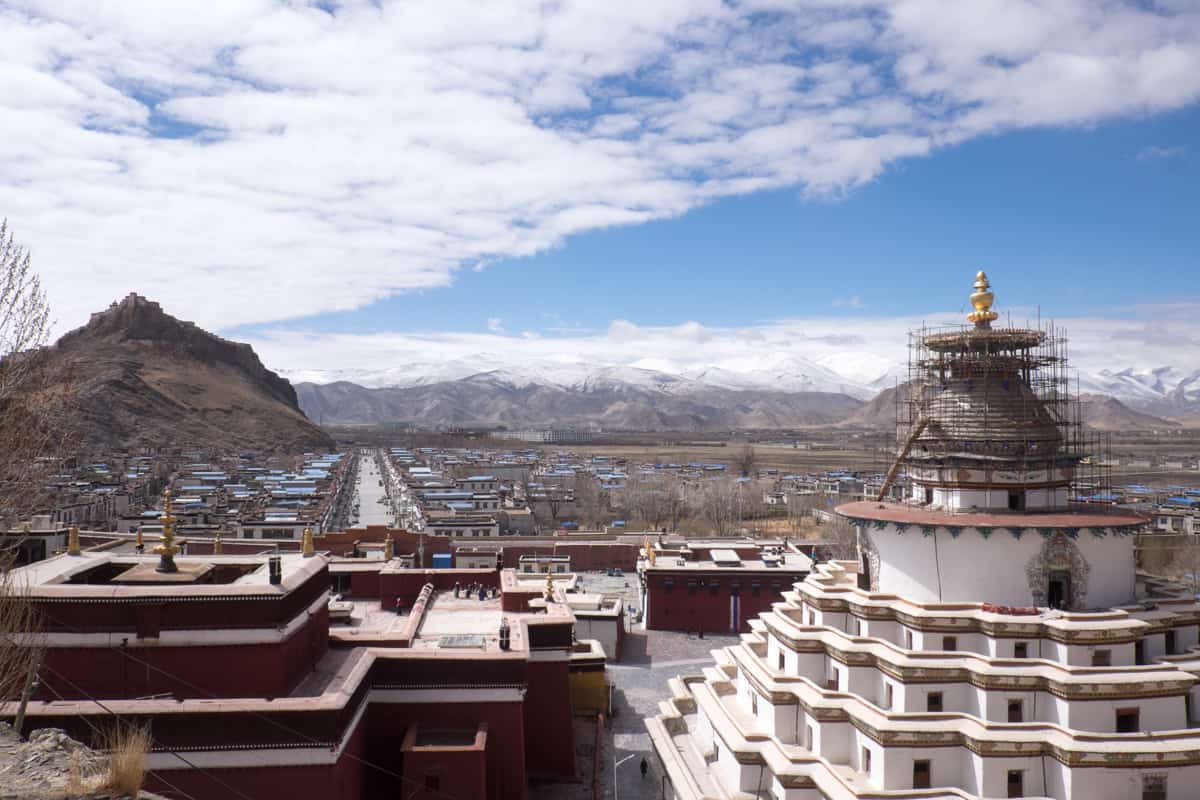
Again, we did this as a group, ensuring we had a photographer at the passport store in Kathmandu who was briefed as to our specific image request.
Shigatse
Gyantse, Tibet
The 1000-roomed Potala Palace in Lhasa, Tibet
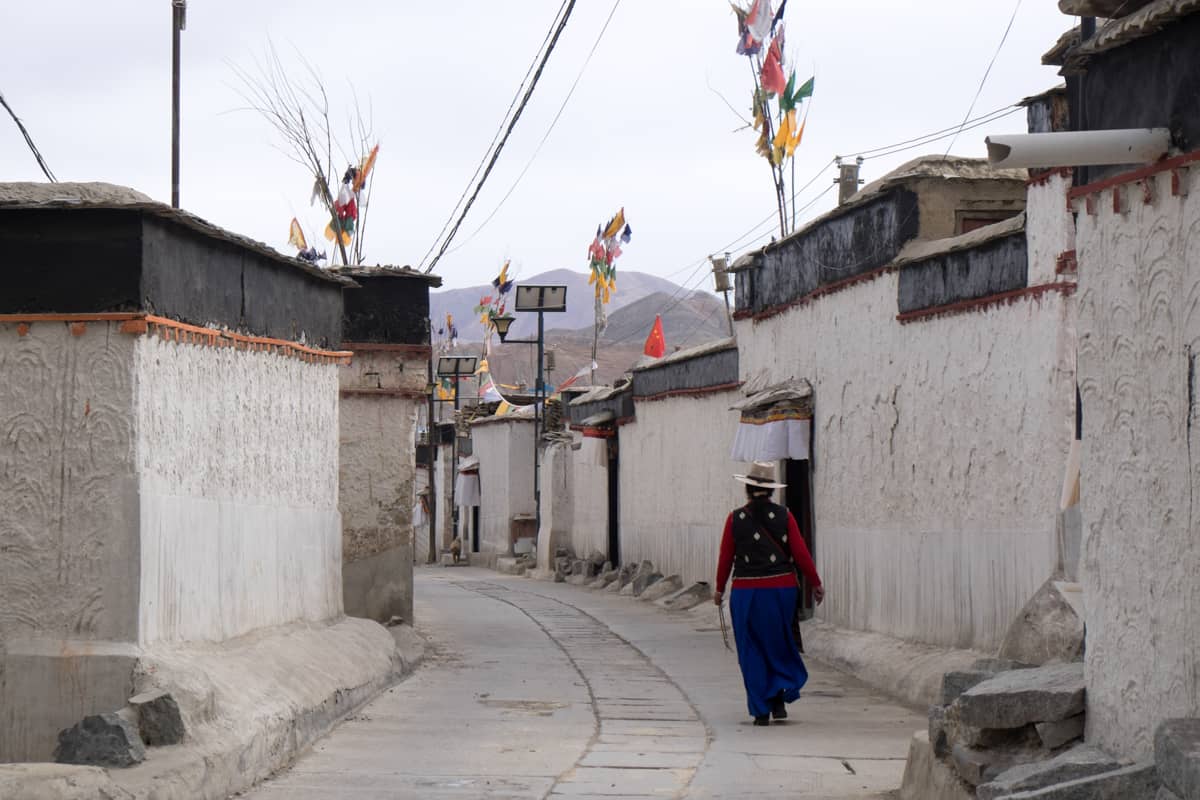
Inside Rombuk Monastary at Tibet Everest Base Camp
It’s hard to distinguish what is what in between the labyrinth of superficial Chinese town structures; so having someone point you in the right direction was a welcome gesture.
Not taking or carrying any form of Tibet guidebook, related literature or any political materials into the country. The scanners at Lhasa airport scan heavily for books.

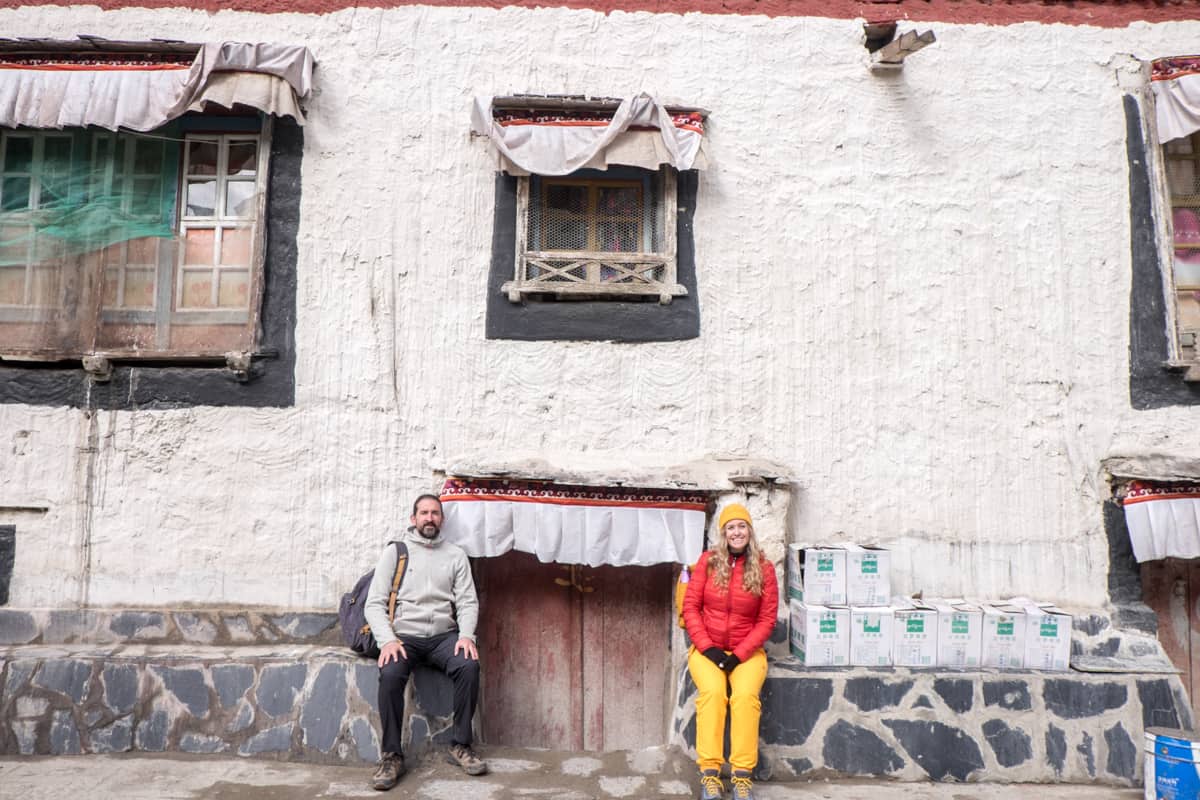
Overnight it had snowed, so we were able to take another walk towards Everest as it stood glowing with a golden morning halo.
Here we visited the Palcho Monastery, which you breathlessly climb for 20 minutes for a broad panoramic view of the surrounding village, fortress and mountain ranges. This moment of calm looking out over such a surreal canvas is a time to reflect on where you are.
Rombuk and Everest Base Camp Tibet
Walking the circular, sacred Kora path in Lhasa
Entrance to the Palcho Monastery in Gyantse
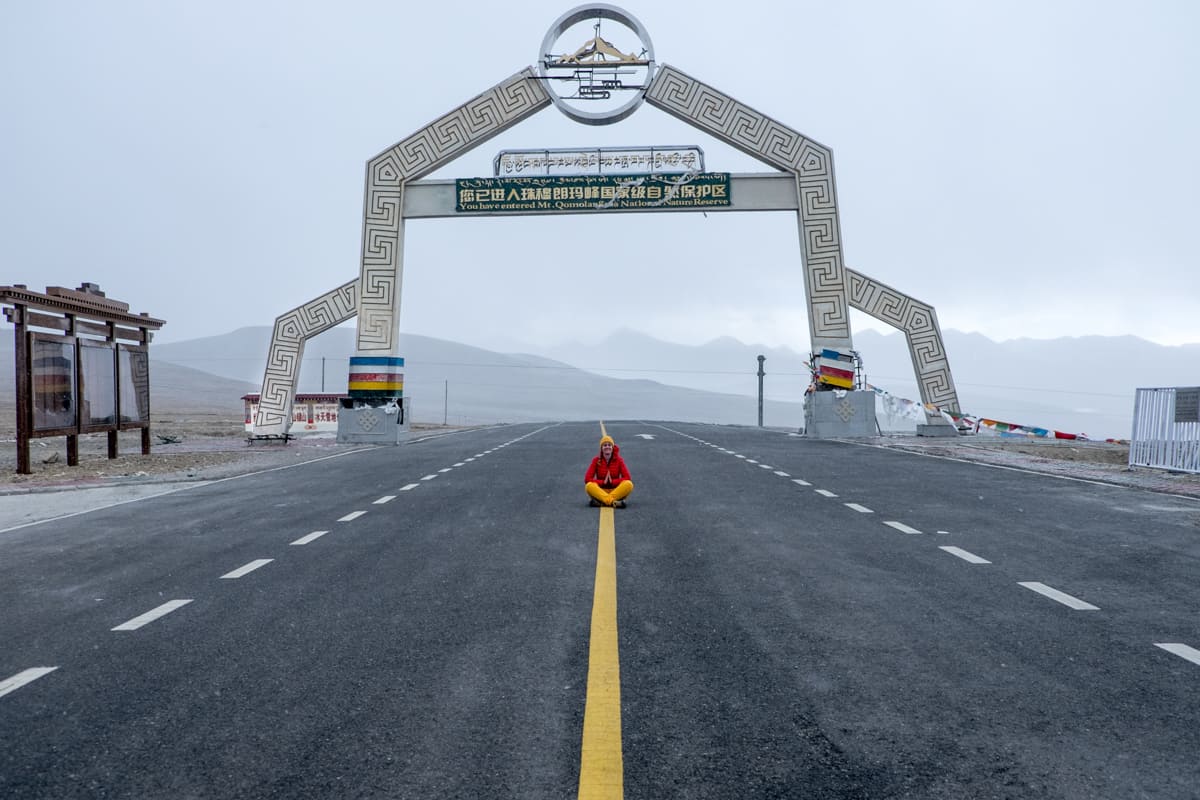
One of the main things I liked about this particular Tibet tour with G Adventures is that (where possible) we stayed in Tibetan owned accommodations, ate at Tibetan owned restaurants and were informed of where to shop at Tibetan owned stores and souvenir stalls.
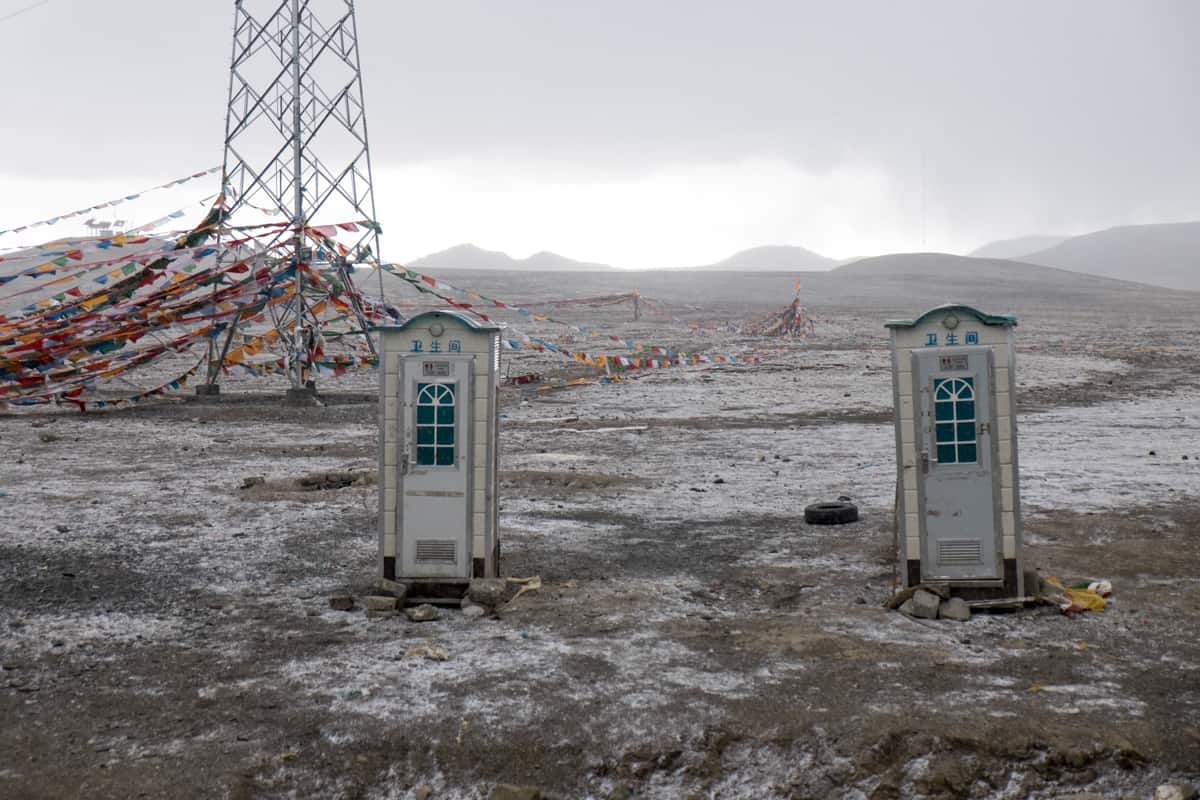
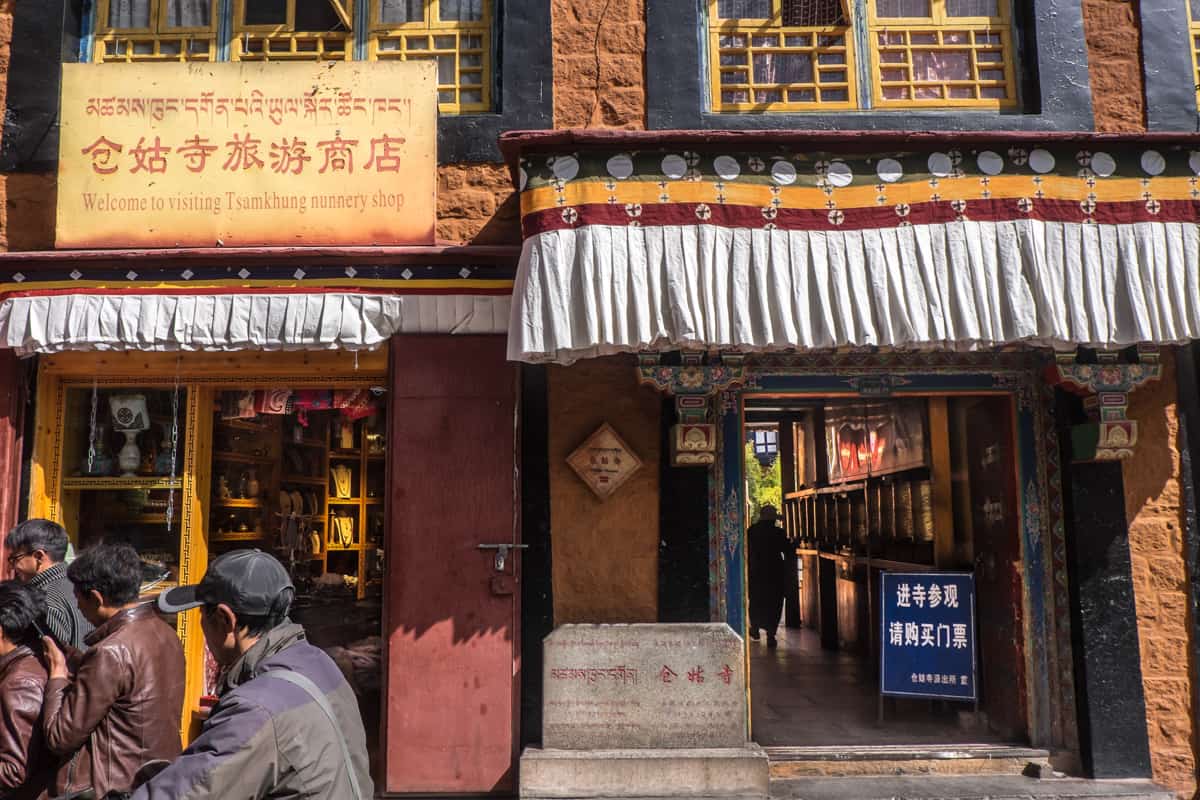
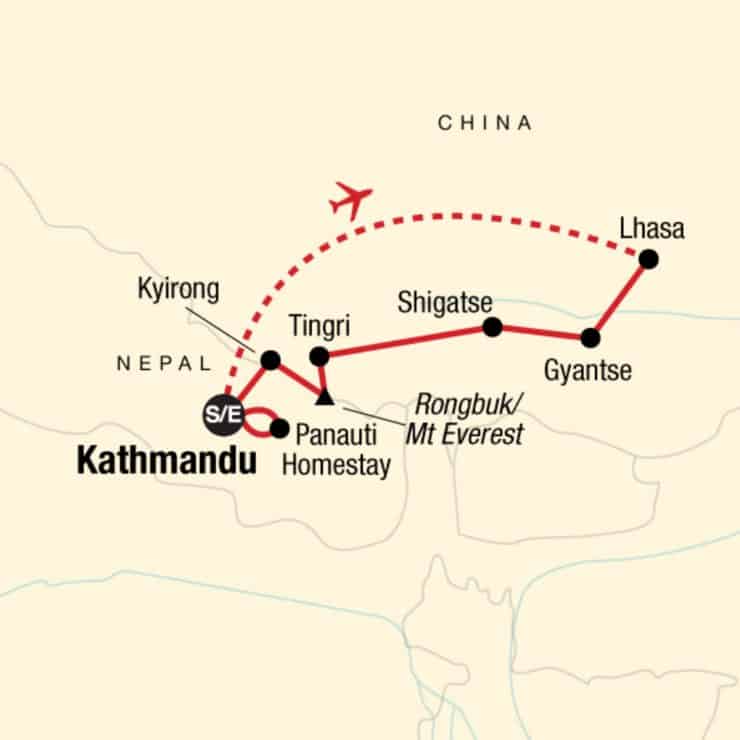
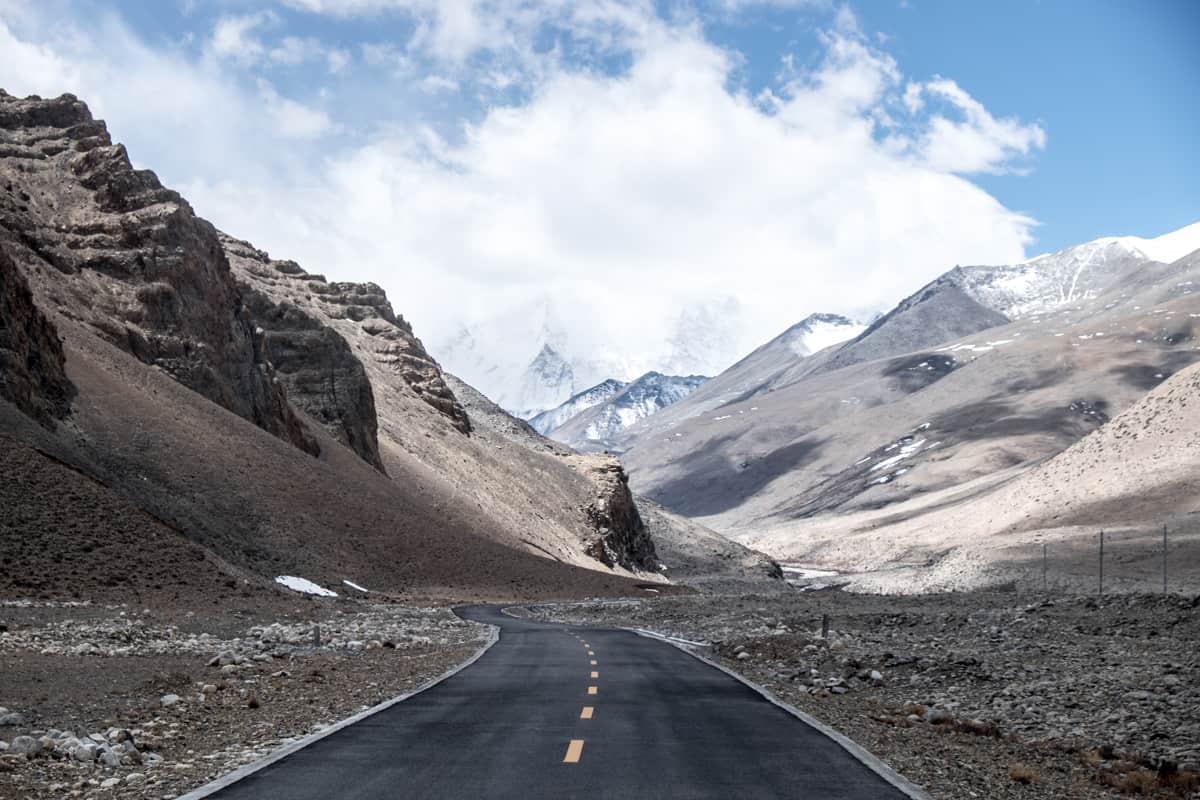
Respect that your Tibetan guides cannot engage in any kind of political discussion, whether that be about the Chinese occupation of Tibet or the current situation regarding the Dalai Lama. They will tell you who people are in the pictures, cultural references and historical references about Tibetan Buddhism, but do not push them any further.
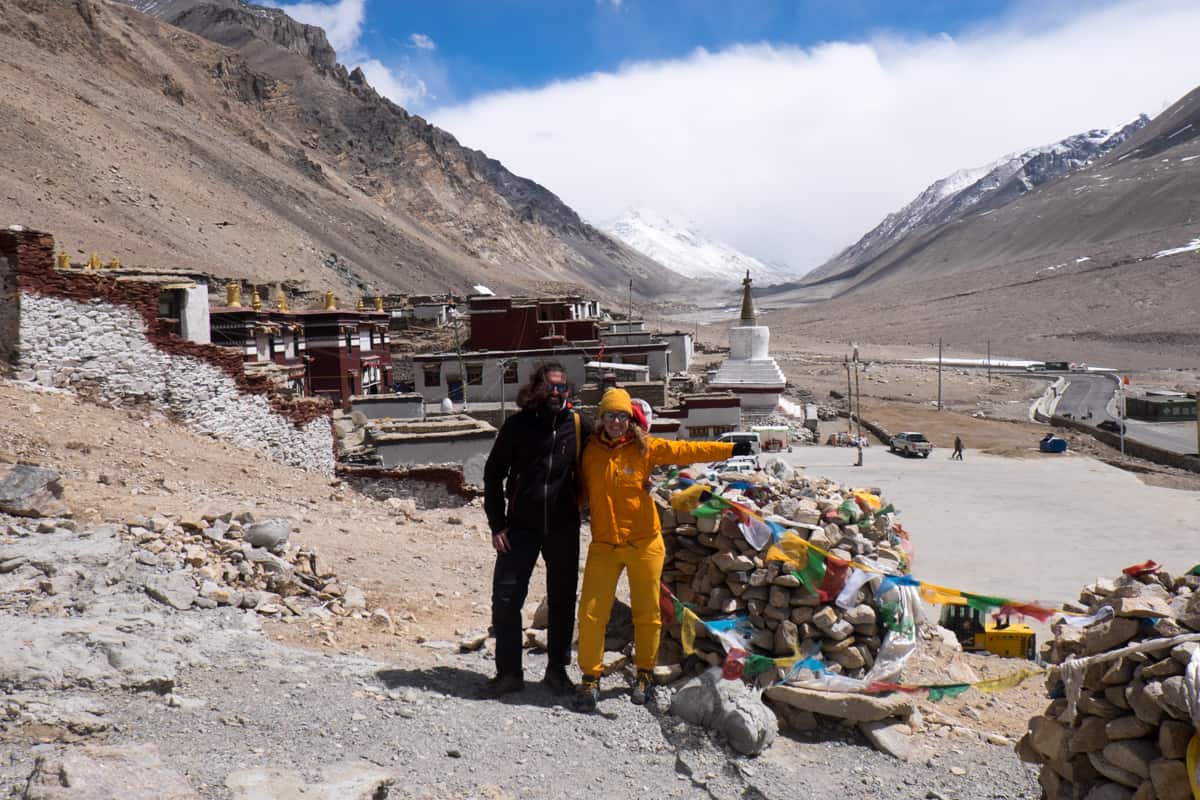
Tibetan Nuns in morning chant at Ani Tsankhung Nunnery in Lhasa
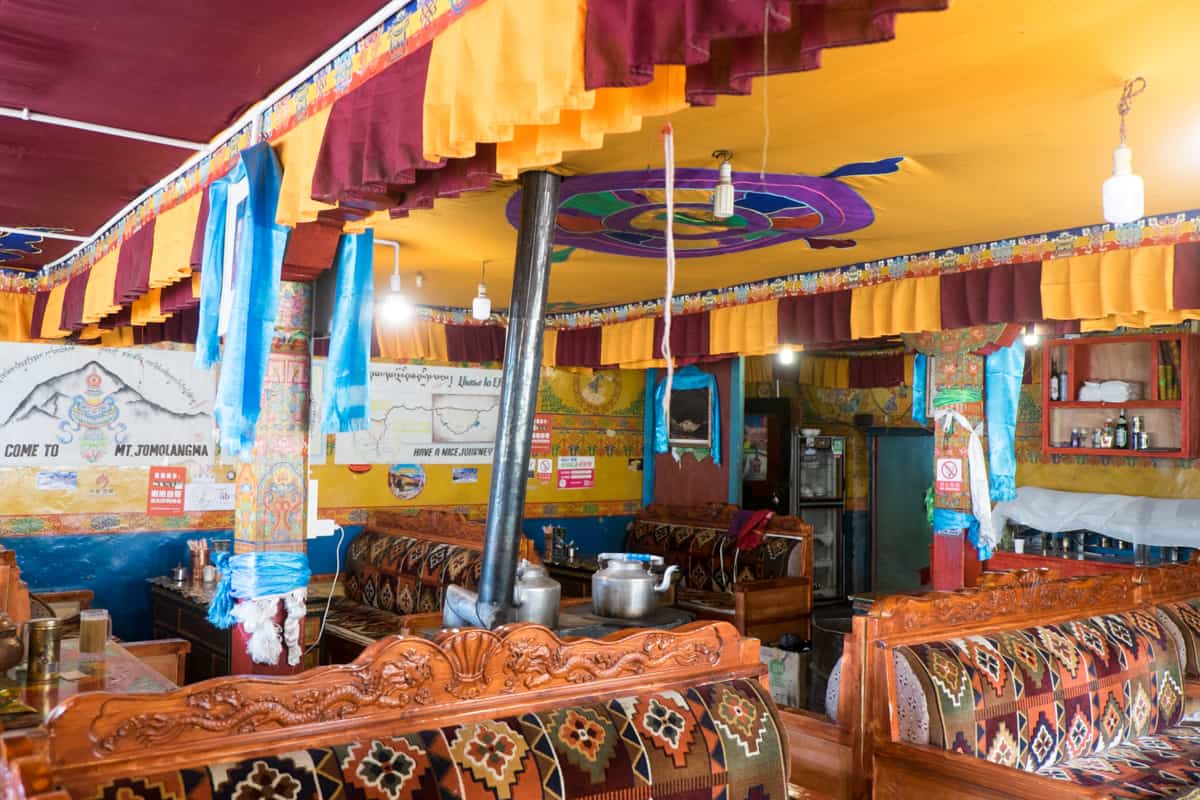
It takes 9 hours to get here from Lhasa, with spectacular viewpoints to stop at including the Kambalaat High Pass at 4794m where you can view Mt. Nojin Kangatan (7191m) and drive part of the parameter of Lake Yamdork.
You won’t forget your time in Tibet easily, but it is a place where some pre-romanticised ideas are shattered, and you leave with more questions and emotions than when you first arrived. It’s a mix of fascinating otherworldly spiritualism in mountainside monasteries and palaces and nunneries and temples. It’s the sadness at seeing a long history eroded that conflicts with such remarkable beauty.
Our Nepali CEO took our forms, photos and passports to the relevant agency and embassy for processing. It was an agonising wait to know if we were able to get into Tibet or not (with an itinerary in Nepal for two days to fill the time). It was a horrible feeling, not having our passports.
The toilets on the Gyatso pass in Tibet are the highest toilets on earth!
Gyantse village streets
Kyirong Border Town to Nepal
Each of us had a four-page form to fill out, which is very much like any visa form. It asks for passport details, where else you have travelled on your particular passport in the last few months, points of contact and for a detailed breakdown of your day to day itinerary. This, of course, is something our G Adventures CEO (Chief Experience Officer) helped us with, ensuring we all had the exact itinerary and dates listed in a clear format.
What to Pack for Tibet
Clothing
- Layers including merino wool thermals, t-shirts, fleece, windproof or tri-climate jacket and a waterproof jacket. I layered as swapped and changed. One minute it’s sunny, and you work up a sweat walking around. The next you will be jumping out of the car to snap away at the valley ridges and mountain scenes where it’s cold, windy, raining or even snowing. Every day is a surprise.
- You will need modest clothing that covers shoulders and knees for when you enter monasteries, temples and other religious areas. Casual long-sleeve travel tops are acceptable, or best tops with cardigans or light-sport jackets.
- Jeans and hiking trousers (Mammut are my go-to brand for fit and comfort). Wear your most comfy pants for long journeys, my favourite being my roomy, yellow climbing pants.
- Gloves and a hat for those cold, windy and sometimes snowy conditions at high heights
- Trekking shoes (better when walking outside in more adverse weather conditions and walking at Everest Base camp) and sneakers / comfortable walking shoes for general city wandering. I love my Asolo hikers and have Vivobarefoot for everyday walking.
One thing that can’t be changed is Tibet’s incredible scenery. The dominant background of the Himalayan strip of peaks is one of the best things about this trip, whatever the weather.
Essentials and Extras
- Sunglasses and sunscreen. Particularly in the morning to mid-afternoon in Lhasa, the sun was extreme. A sun hat is recommended for those more sensitive to the heat.
- Silk sleeping liner for an extra layer at Everest Base Camp and monastery stay and a head torch since the toilet is in a separate building outside of your room. If you have the time to shop around, you can also find these items in Kathmandu before the trip start.
- Toilet paper for roadside ‘nature toilets’ and squats.
- Hand sanitiser (diarrhoea is one of the main health issues for Tibet)
- Microfibre travel towel, which is a good, lightweight extra (where you might need a fresh, clean towel or for use at EBC).
- Snacks for sustenance on the road. I usually take a week’s worth of protein and healthy snack bars.
- Painkillers (also to help with early-onset symptoms of altitude). I was able to get stronger 600mg Ibuprofen, only on prescription from my doctor. However, they were vital in curbing early onset on migraines which would have caused further sickness.
Leaving Mount Everest behind we took back to the road for a 9-hour drive to the Nepal-Tibet border town of Kyirong. While there is not much to see here, it is where we had our last Tibetan dinner and a good night’s rest before the 10-hour drive back to Kathmandu.
Avoiding Altitude Sickness in Tibet

Seeing Tibet today is about getting lost in an ancient culture that dates back to nearly 1,500 years, set within lake-filled valleys and rocky plateaus. To set foot inside some of the world’s oldest monasteries and temples, flanked by the endless peaks and ridges of the Himalayas that naturally hug Tibet in protection, with mighty Everest watching over.
Tips for Avoiding Altitude Sickness in Tibet

The view of Mount Everest near Everest Base Camp, Tibet
A short drive from Shigatse, our time in neighbouring Shegar was a sleepover point at 4,300m, ready for the nine-hour drive to Everest Base camp the following day.

Application of Visa
Sera Monastery in Lhasa
But the high altitude in Tibet isn’t something to be worried about. The trip is designed specifically to have enough time in Lhasa to acclimatise, as well as a lot of ‘up and down’ drives to cover various altitudes, so your body adjusts. There’s a precise science to the trip itinerary, the route and the designated stops, that has you covered without you having to overthink it.
Travel Tibet and Come Back Changed
There’s a lot to soak in, where you’ll be spiritually moved and emotionally stirred in equal measures.
Related
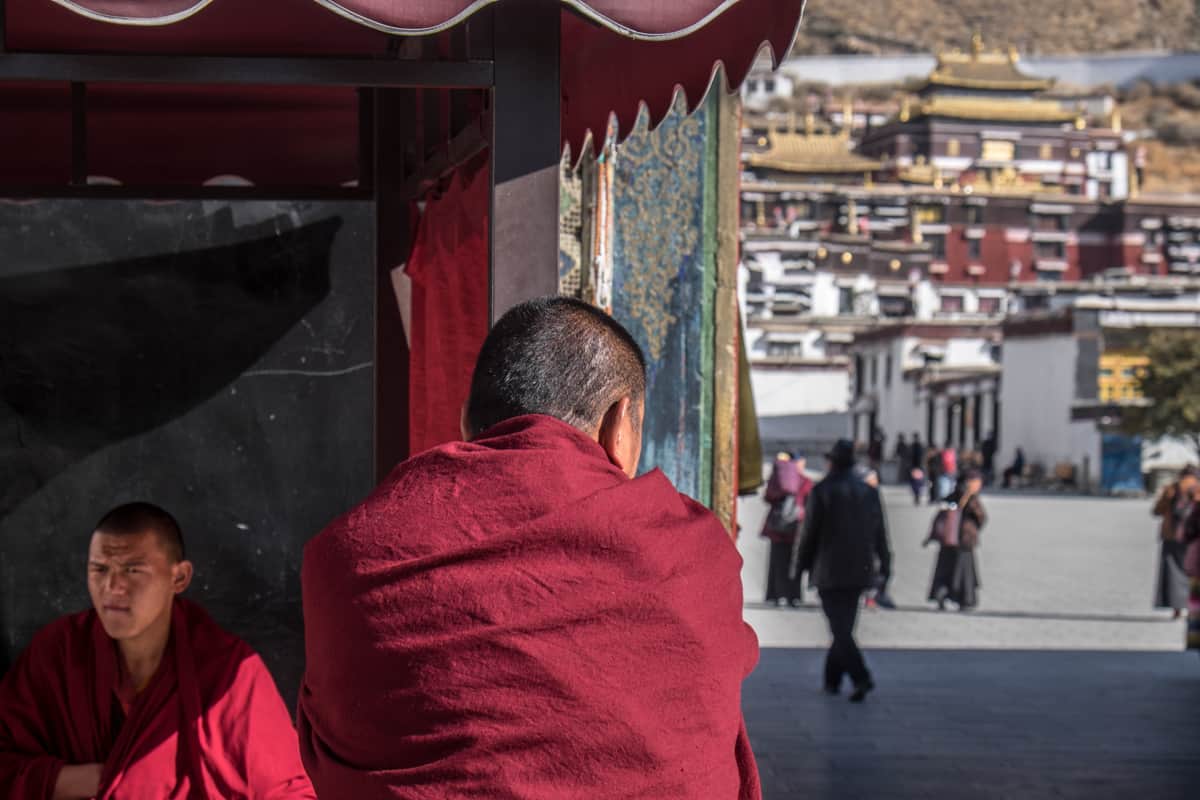
It’s considered by pilgrims to be the second Potala Palace and is visited daily by hundreds of people it’s also home to 26m high Buddha made from 278kgs of gold.
Travel to Tibet Guide – Pin It!
The sweeping views from the top of the Palcho Monastery
Johkang Temple (the oldest part was built in the 600s and enlarged over the centuries) and the circular Barkhor Street that surrounds it is the most sacred area and the beating heart of Tibetan Buddhism of Tibet. Barkhor is one of the primary pilgrim circuits, where Tibetans come to walk in prayer clockwise around the Kora (sacred) path. It is a belief that every Tibetan should visit and pray and at Johkang at least once in their lifetime.
The Sera Monastery is one of the last remaining three core monasteries in the country (together with Drepung Monastery and Ganden Monastery) and one of the two great monasteries of the Gelugpa order. It is better known as the place to see the monks debating – a mesmerising hum of fast-paced chatter and the echoes of hand-clapping which every visitor should experience. While the number of monks has been reduced significantly (by the hundreds), you can still encounter a grand sense of spiritualism here.
